Davenport, Iowa is home to one of the prettiest ballparks in the country, the Quad Cities River Bandits’ Modern Woodmen Park wedged between a rail line and the Mississippi River with a bridge looming over right field. Not that you’d necessarily know it from this postcard which–while a snappy linen night view–predates the construction of the Centennial Bridge connecting Davenport and Rock Island. When this postcard was published in the 1930s it was the lights that were the notable feature–Davenport had night baseball years before the majors held their first game under lights.
Built by the Davenport Levee Commission and designed by Clausen, Kruse & Klein, Davenport Municipal Stadium opened in 1931. That dramatic riverfront site comes with peril–every few years you’ll see incredible photos of the stadium completely surrounded by Mississippi River floodwaters (and prior to installation of modern flood protection in 2004, occasionally completely underwater).

So, what’s changed? Well, besides its general form, which still embodies archetypal Minor League Baseball Stadium…basically everything. A major renovation, completed in 2004, retained the facade but otherwise gutted Davenport Municipal Stadium (then known as John O’Donnell Stadium) and turned it into today's Modern Woodmen Park. Shifts in the sport itself are visible in those changes to the ballpark, like the proliferation of luxury boxes and the shrinking of foul territory.
For the Davenport Levee Commission, building on flood defenses and reclaimed land was a lucrative business–the government agency was financed by rental income from property under their jurisdiction. As they put it themselves, “continual filling work was in progress along the riverfront. Most of it by the land-fill method of garbage and refuse disposal. Thus, the City of Davenport has been able for many years to avail itself of a low cost method of disposal and at the same time to work toward the reclaiming of great areas of future valuable riverfront property”.
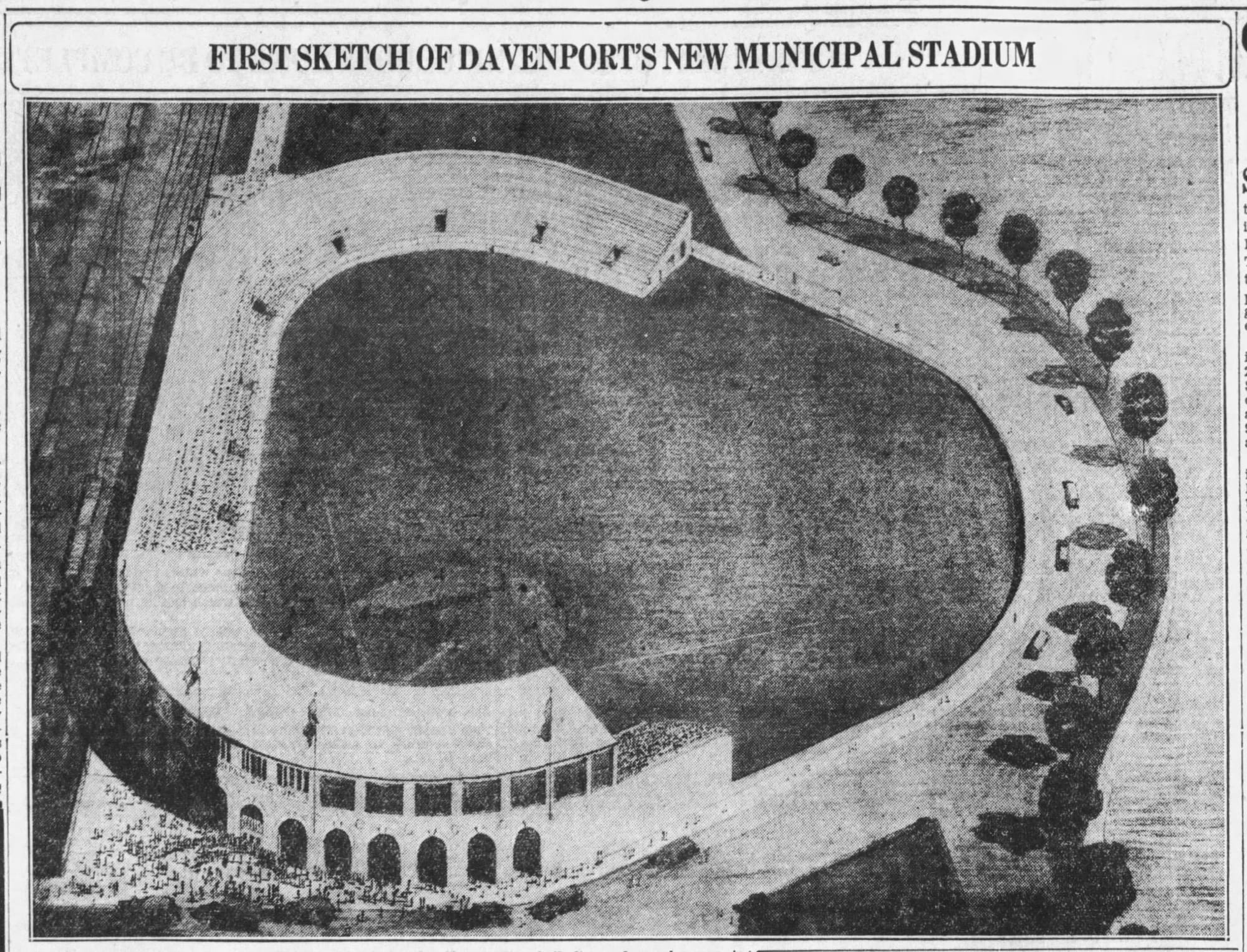
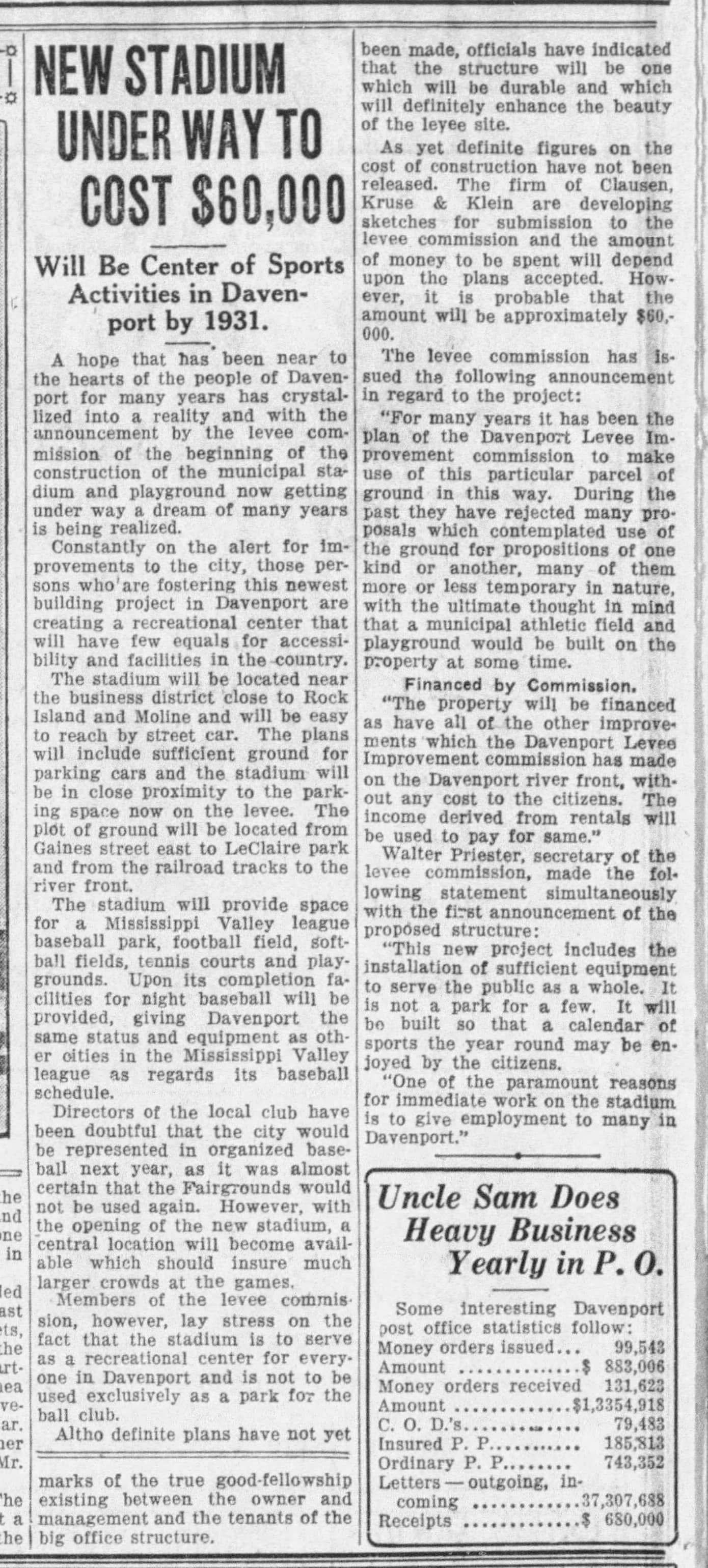
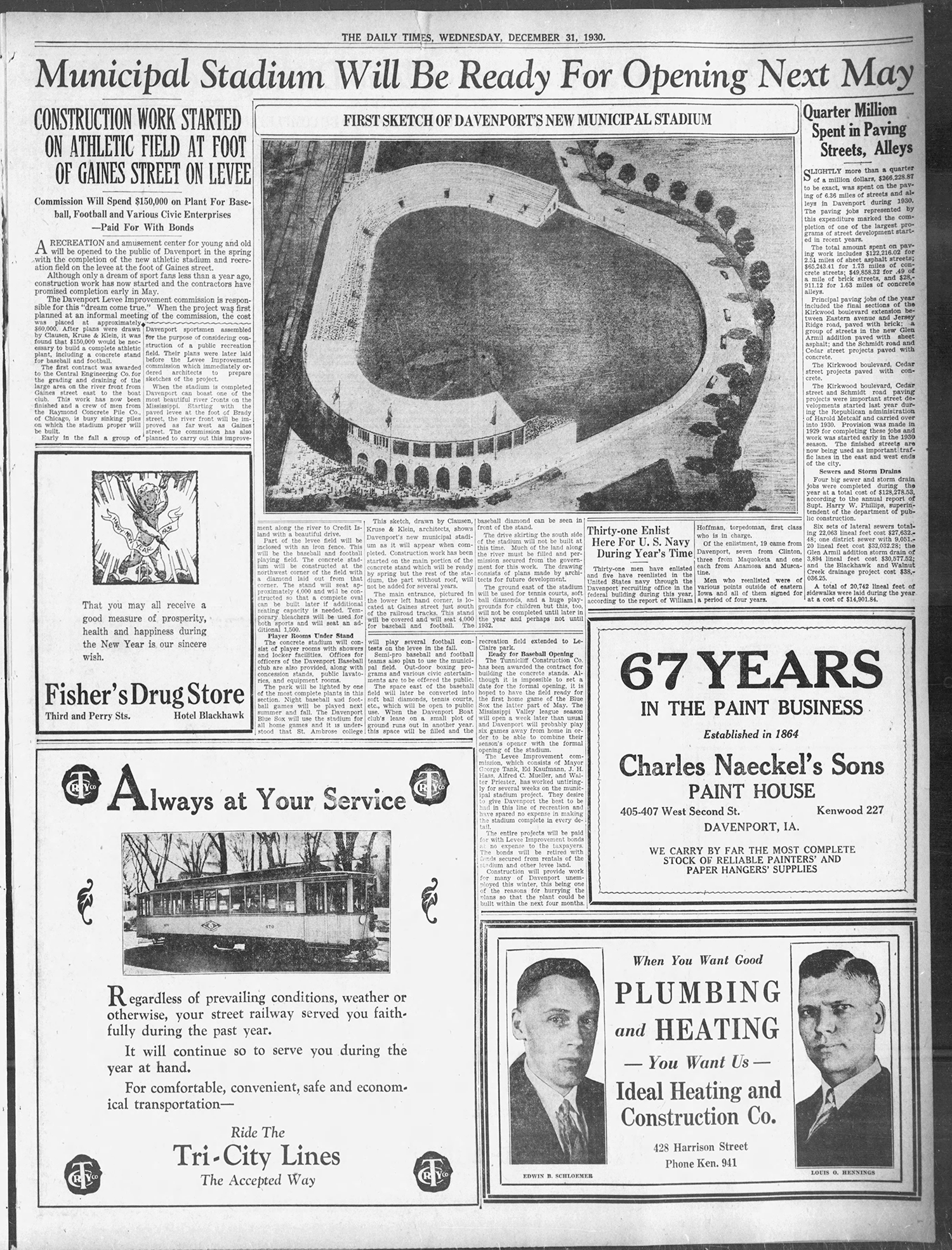
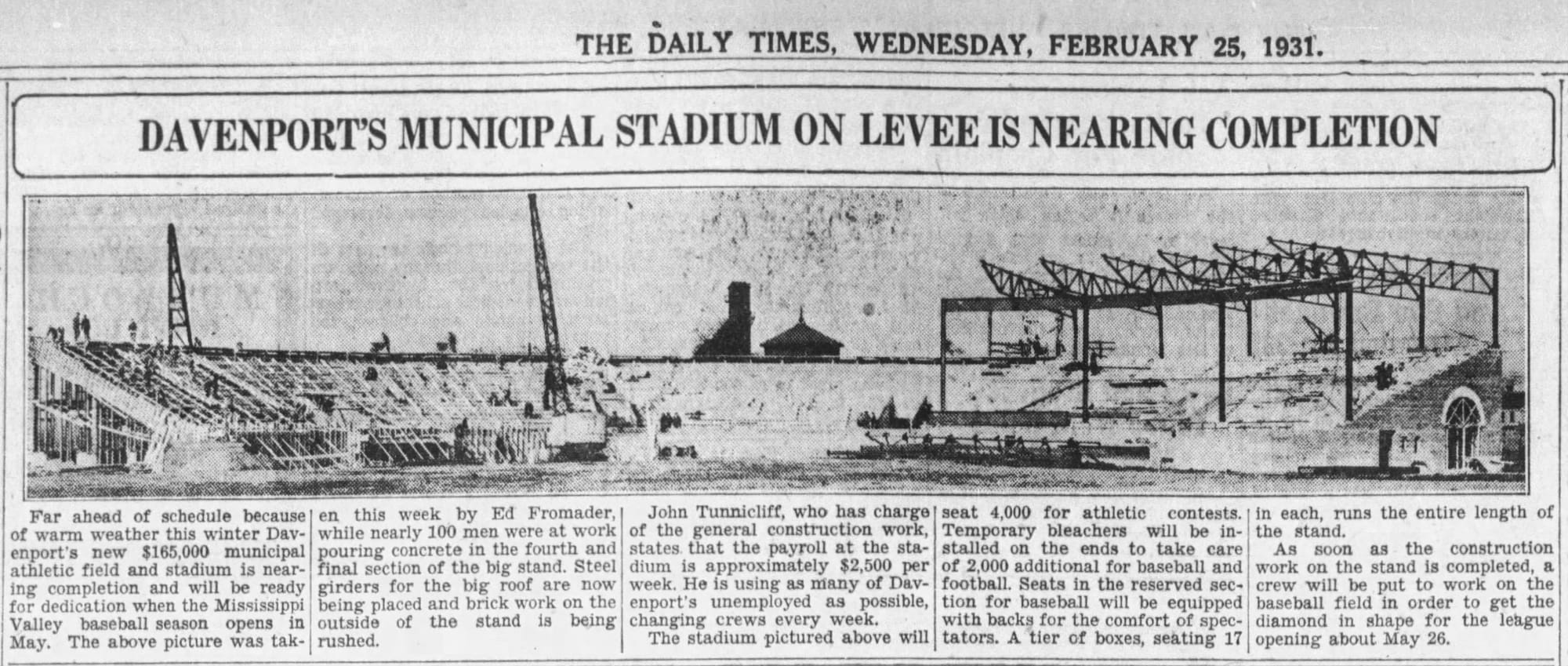
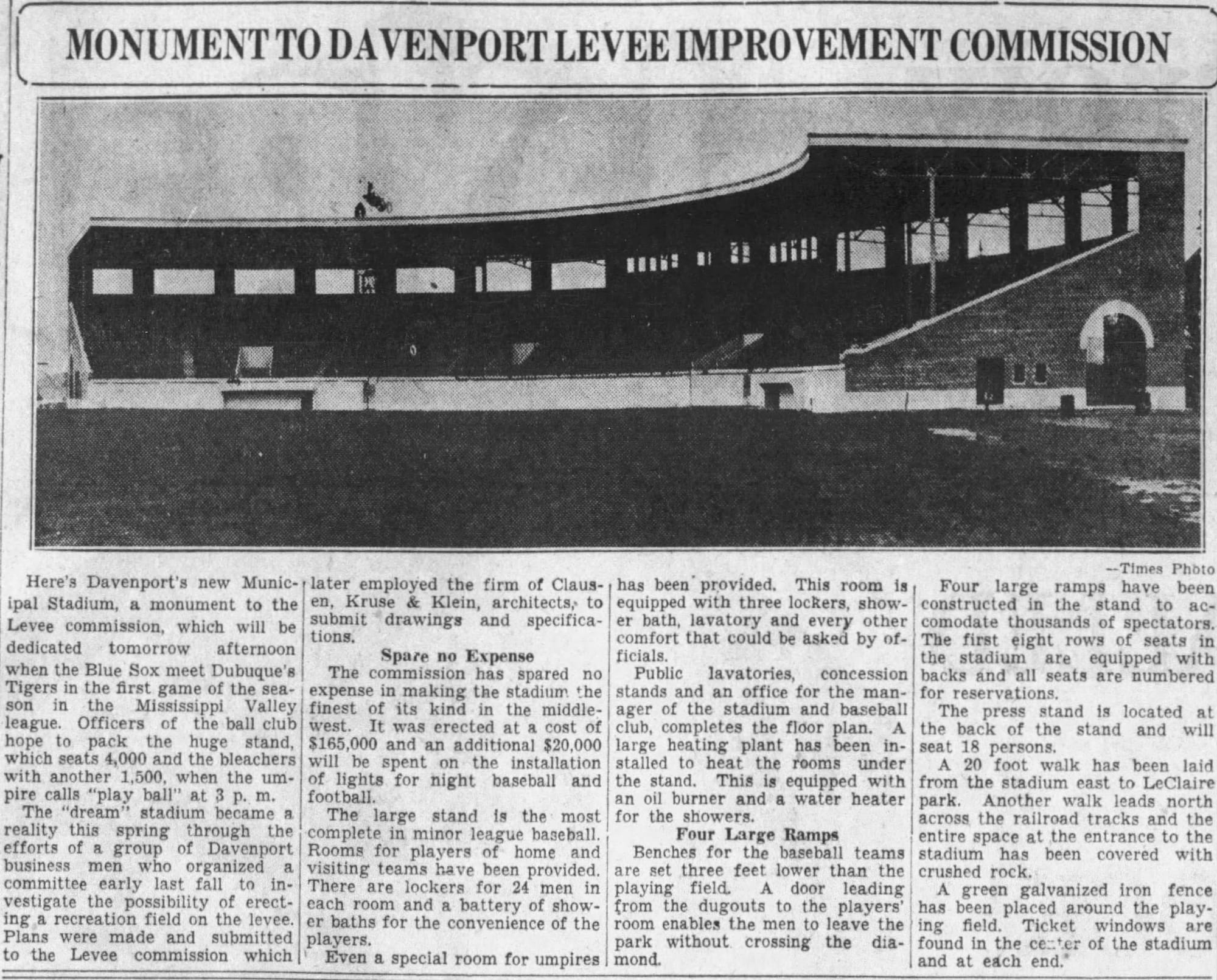
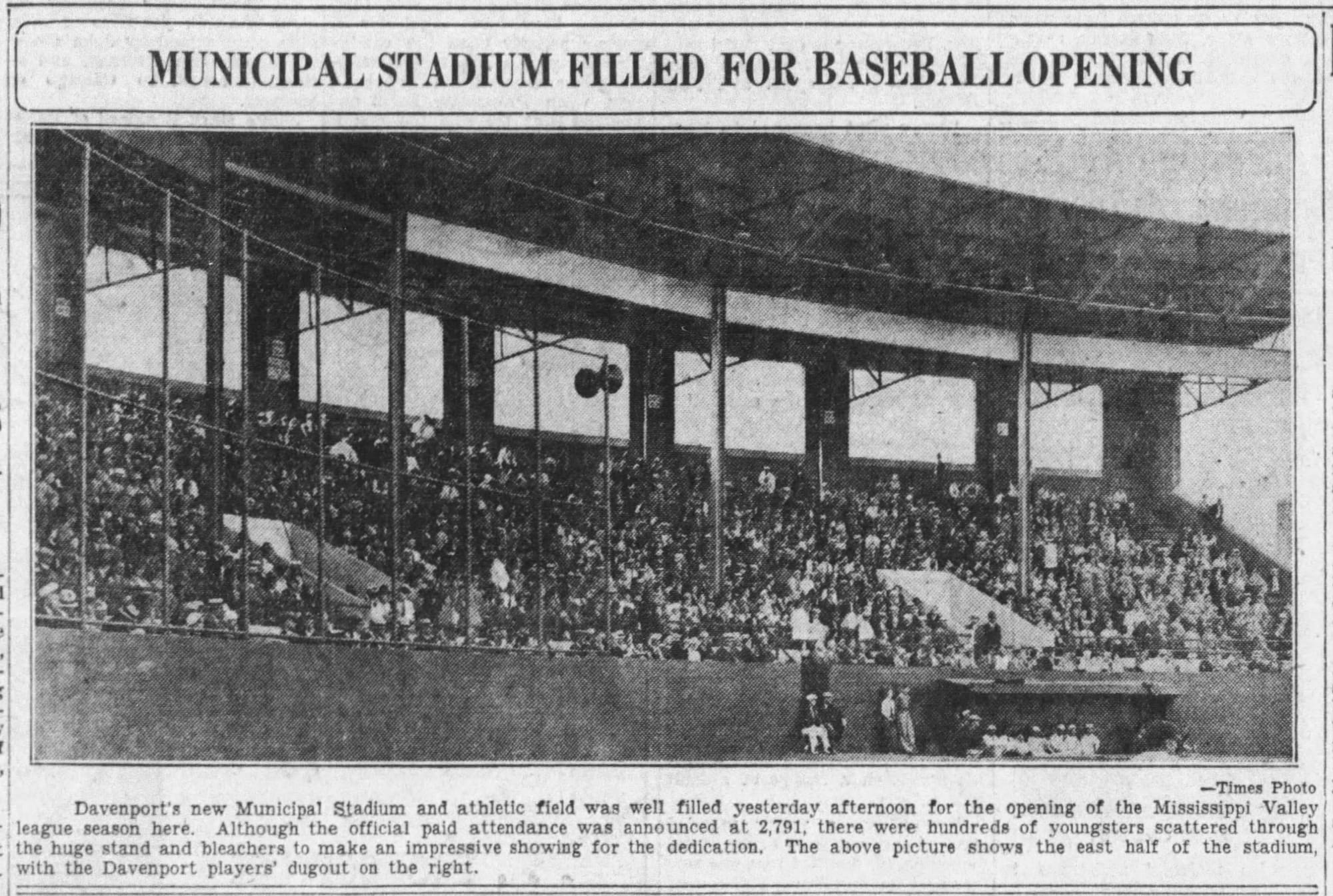
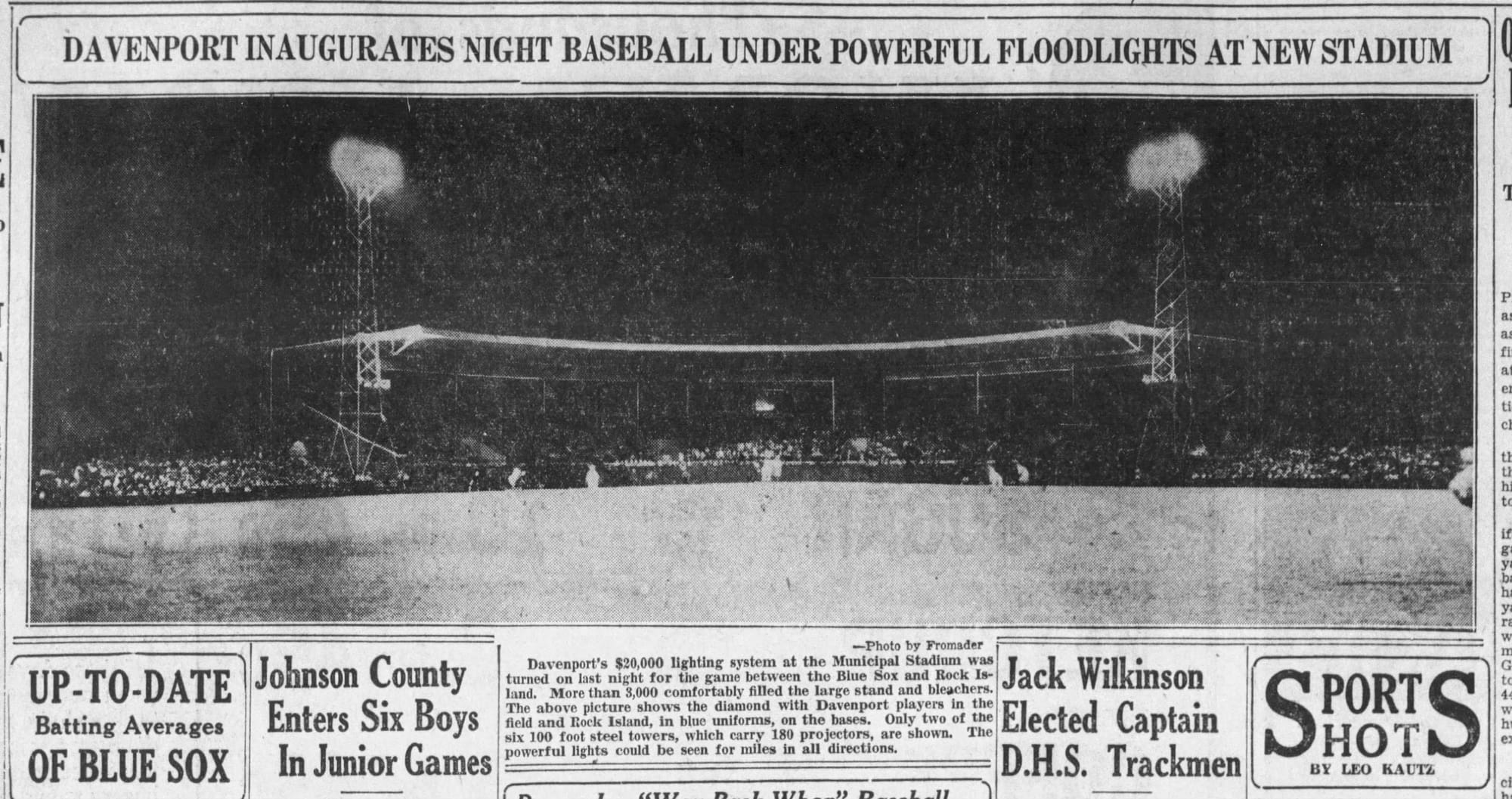
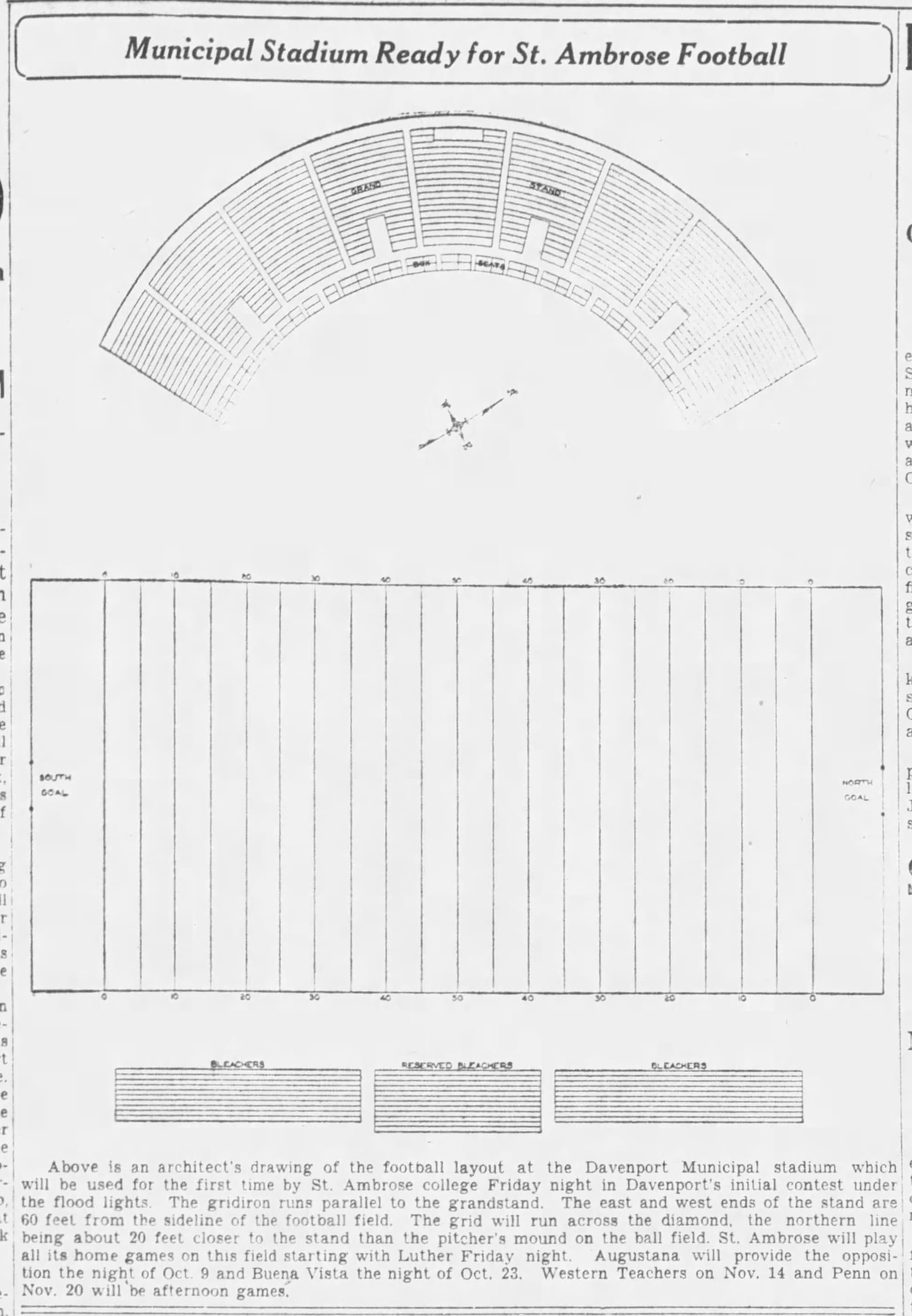
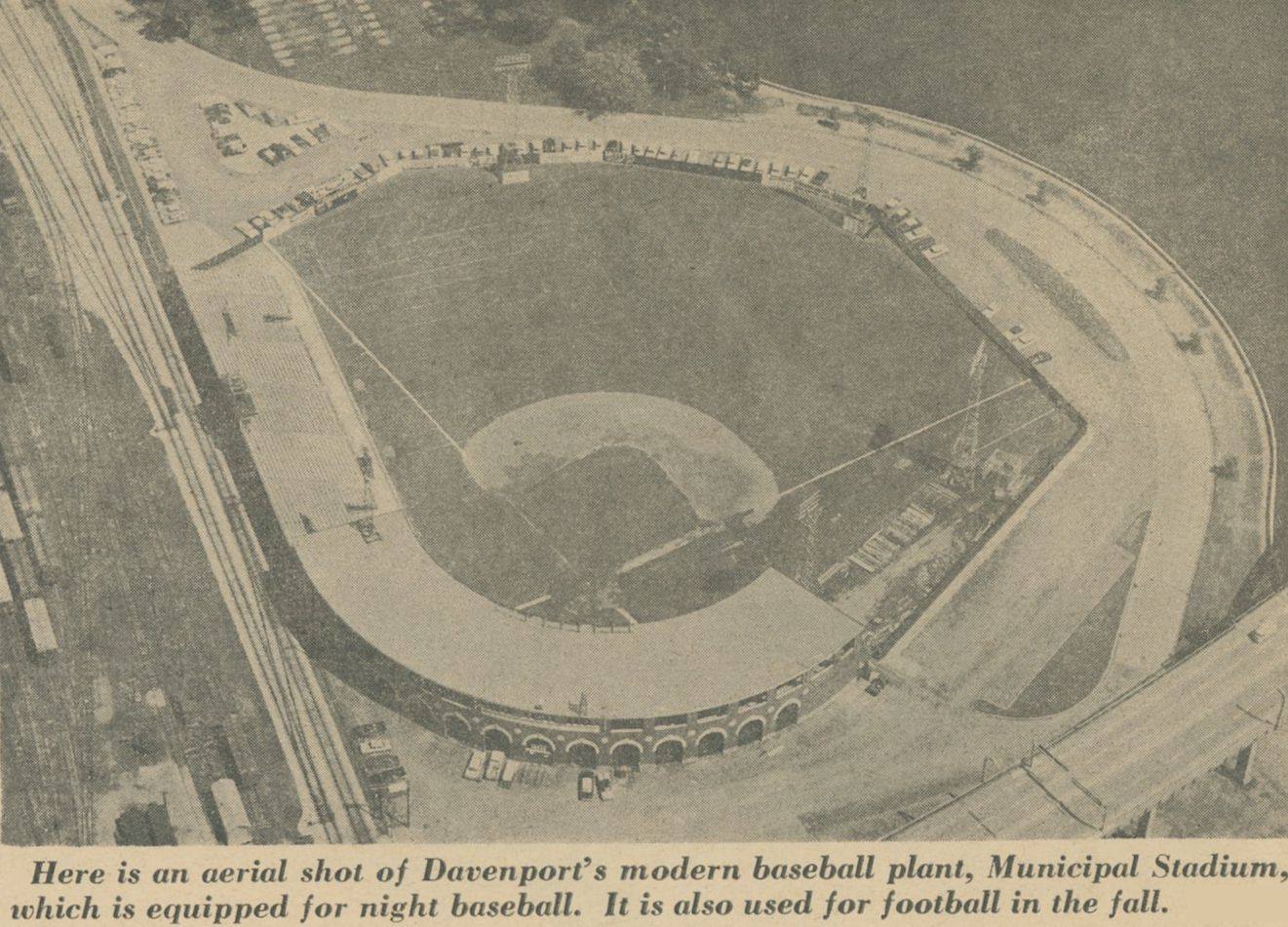
Three 1930 articles on the construction of the new Davenport Municipal Stadium | Four articles as it neared completion and opened in 1931 | 1931 article about its layout for a St. Ambrose University football game | 1961 aerial
The new municipal stadium wasn’t just a place to play baseball and a source of income for the Levee Commission–its construction was also intended to serve as a fast-acting jobs program during the early years of the Great Depression. Sort of a locally-led, per-Roosevelt Works Progress Administration kind of thing as the Hoover Administration’s inaction left cities and states to fend for themselves.
The architects here–Clausen, Kruse, & Klein–were one of Davenport’s most influential architecture firms, but the Davenport Municipal Stadium was never quite finished according to their original plans, which called for a concrete swoop of seating down the left field line and curving into the outfield. Instead, that’s now the site of a patch of (real) corn, the bullpens, and a Ferris wheel.
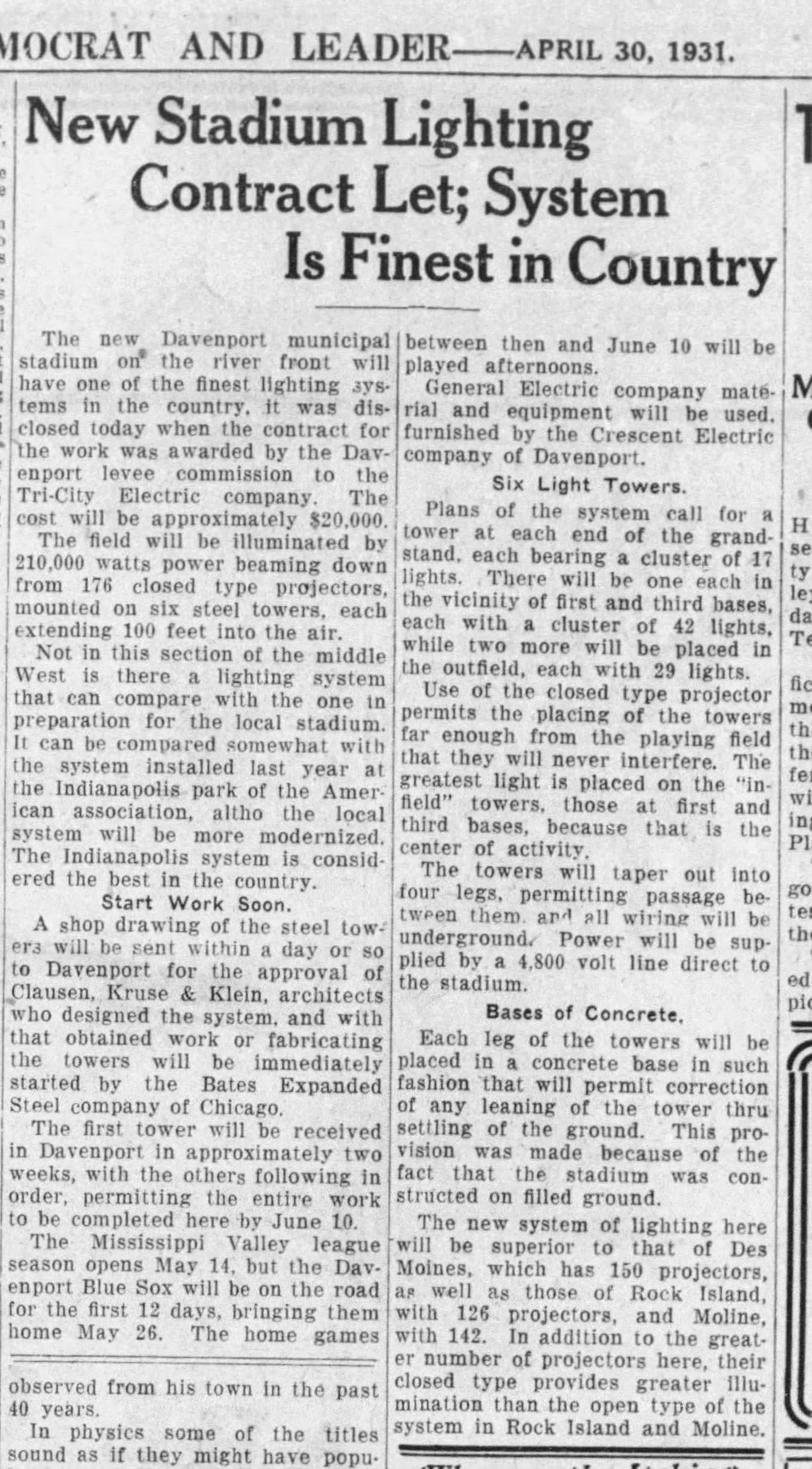
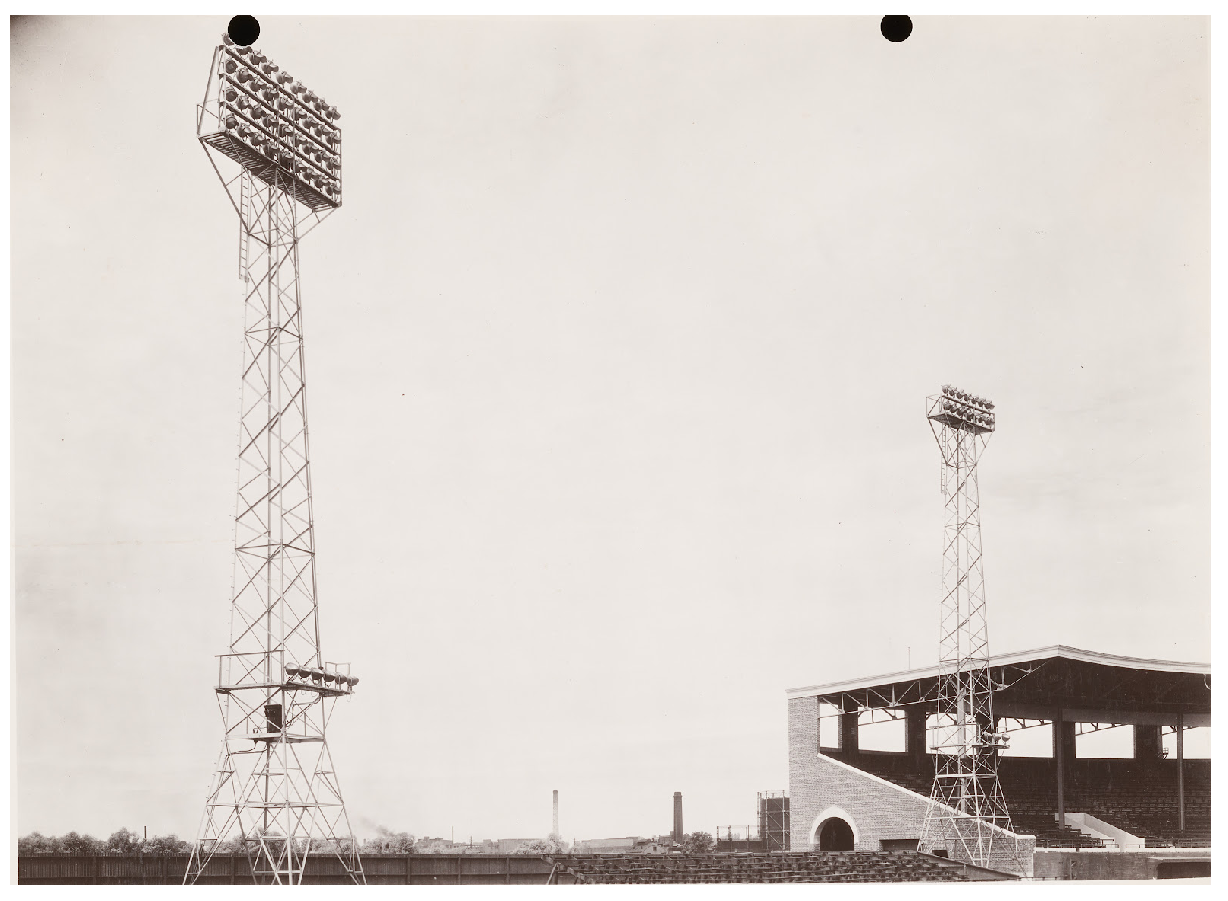
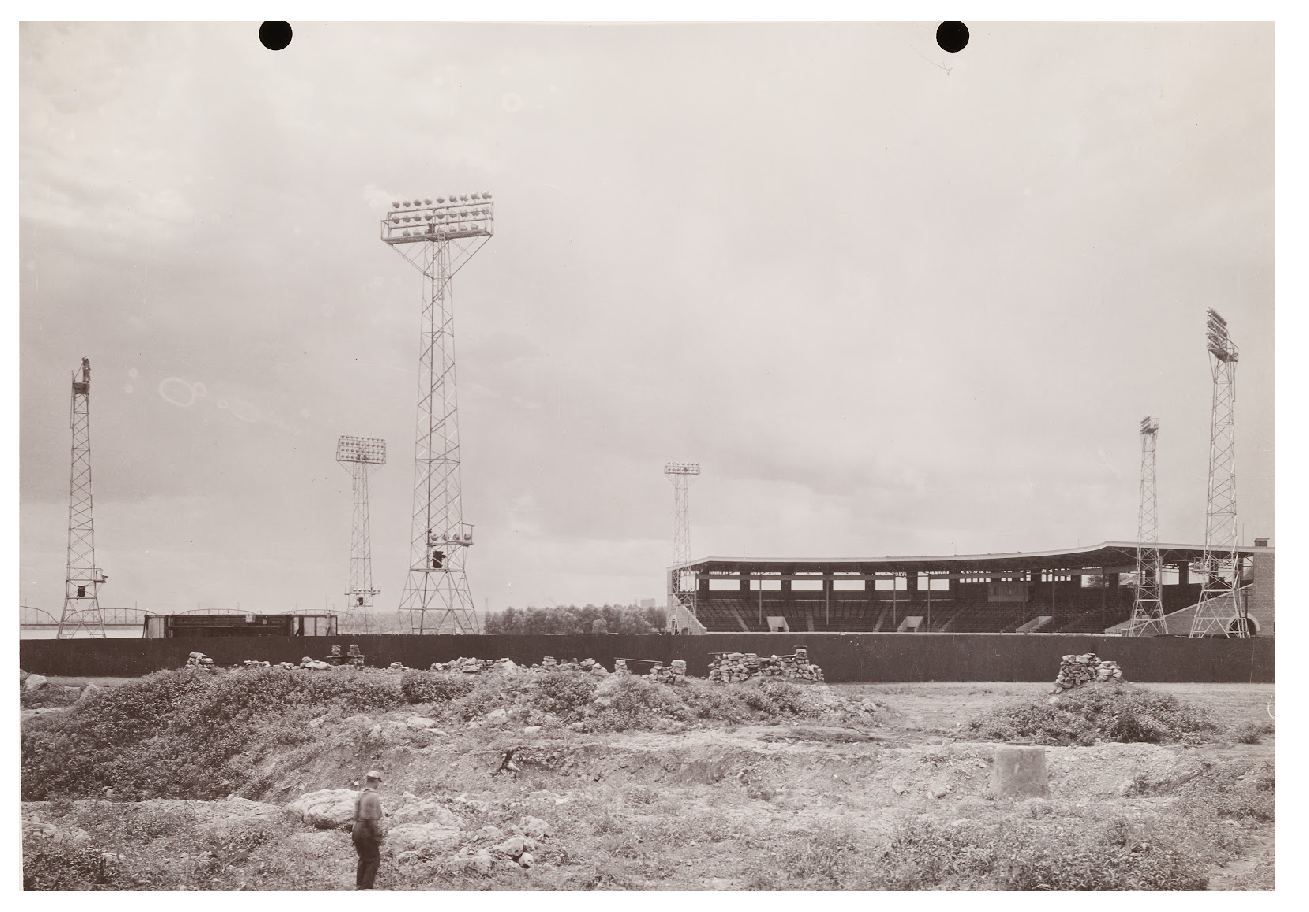
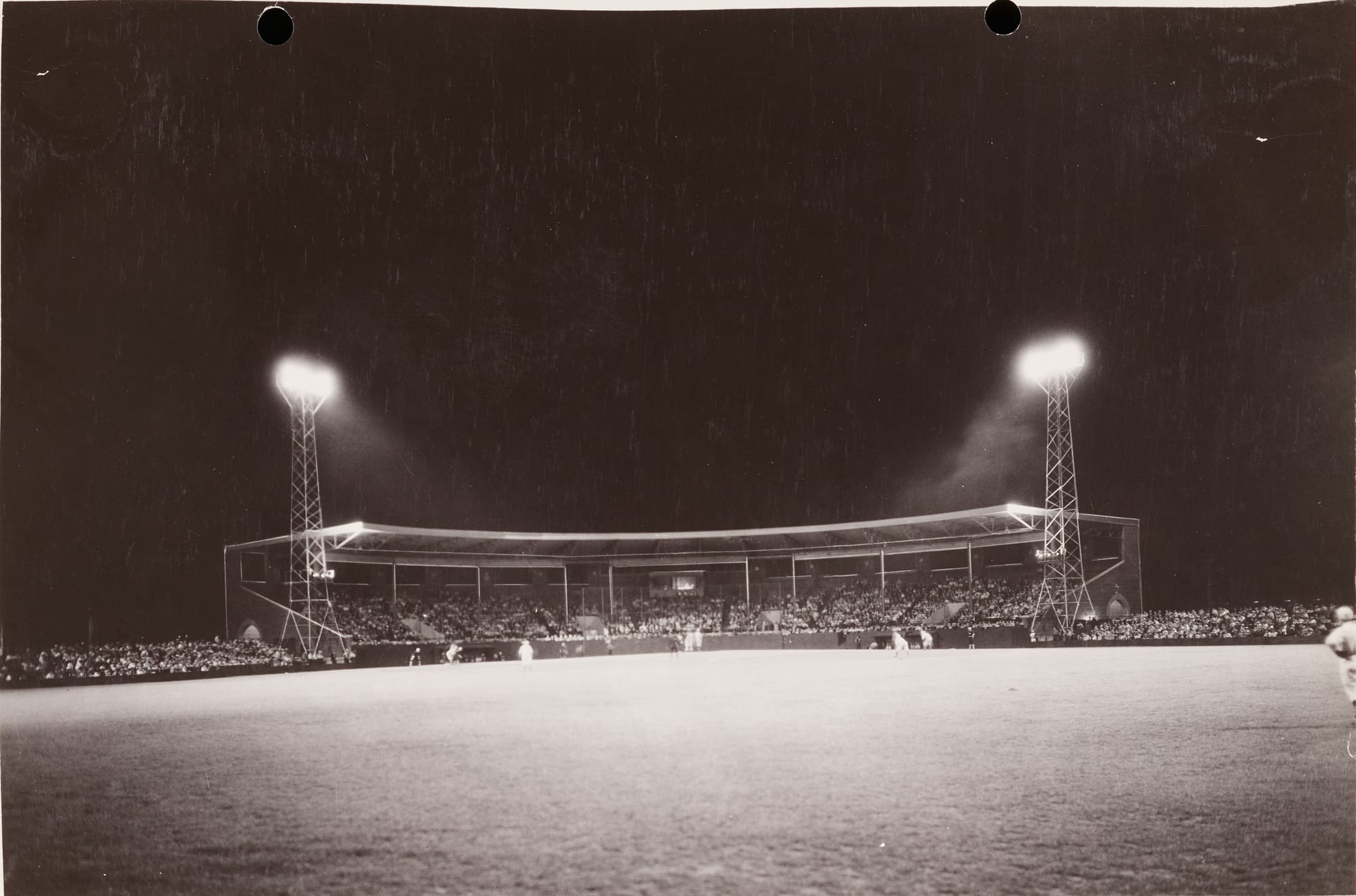
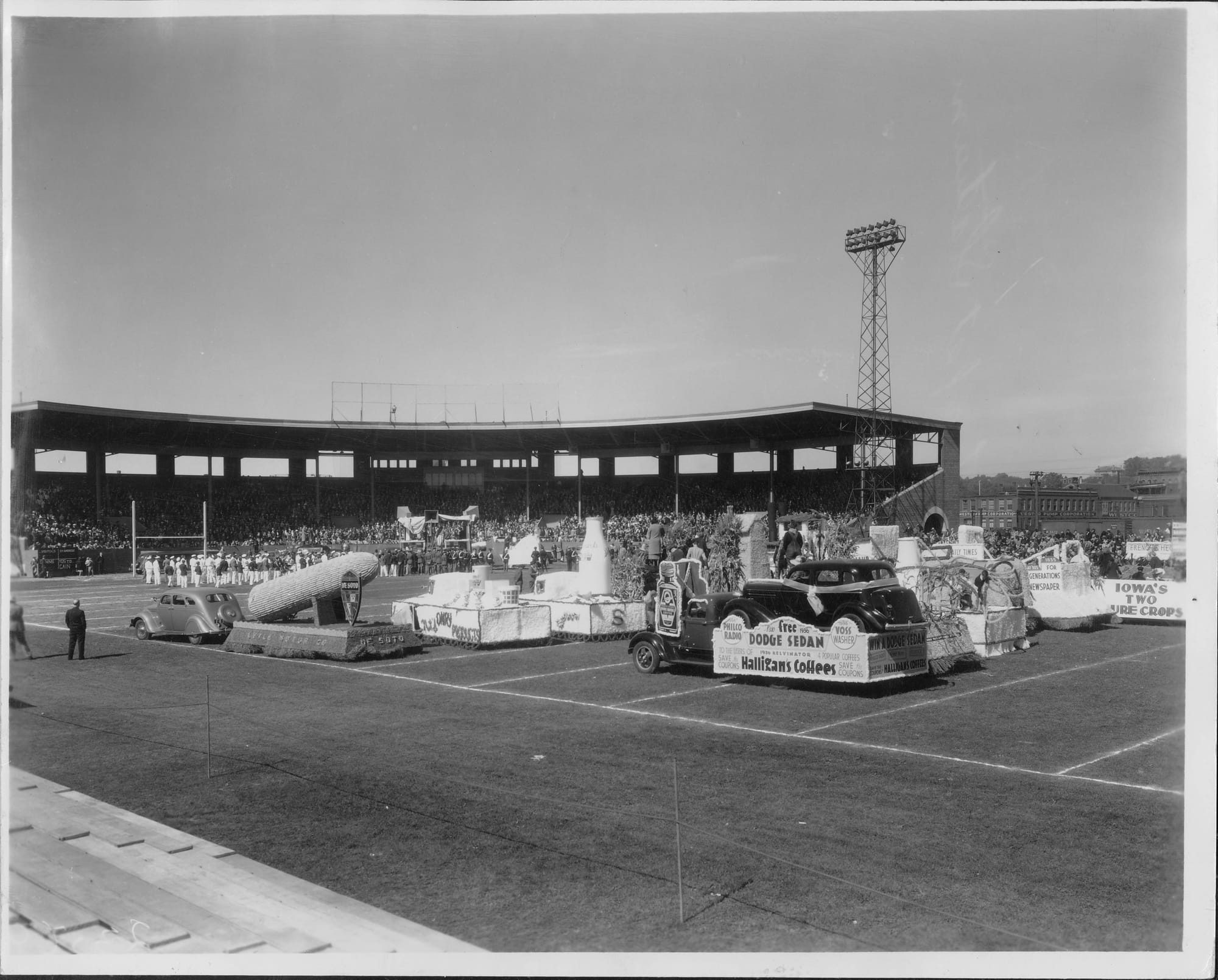
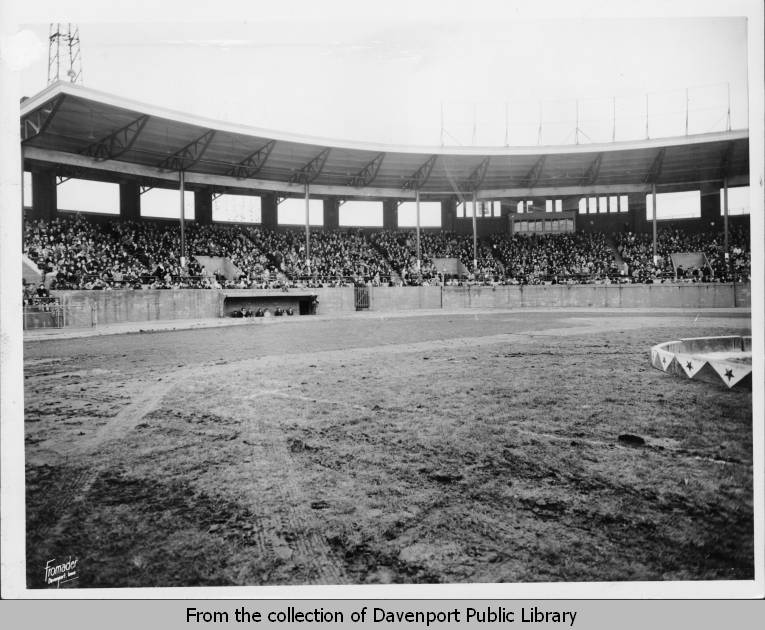
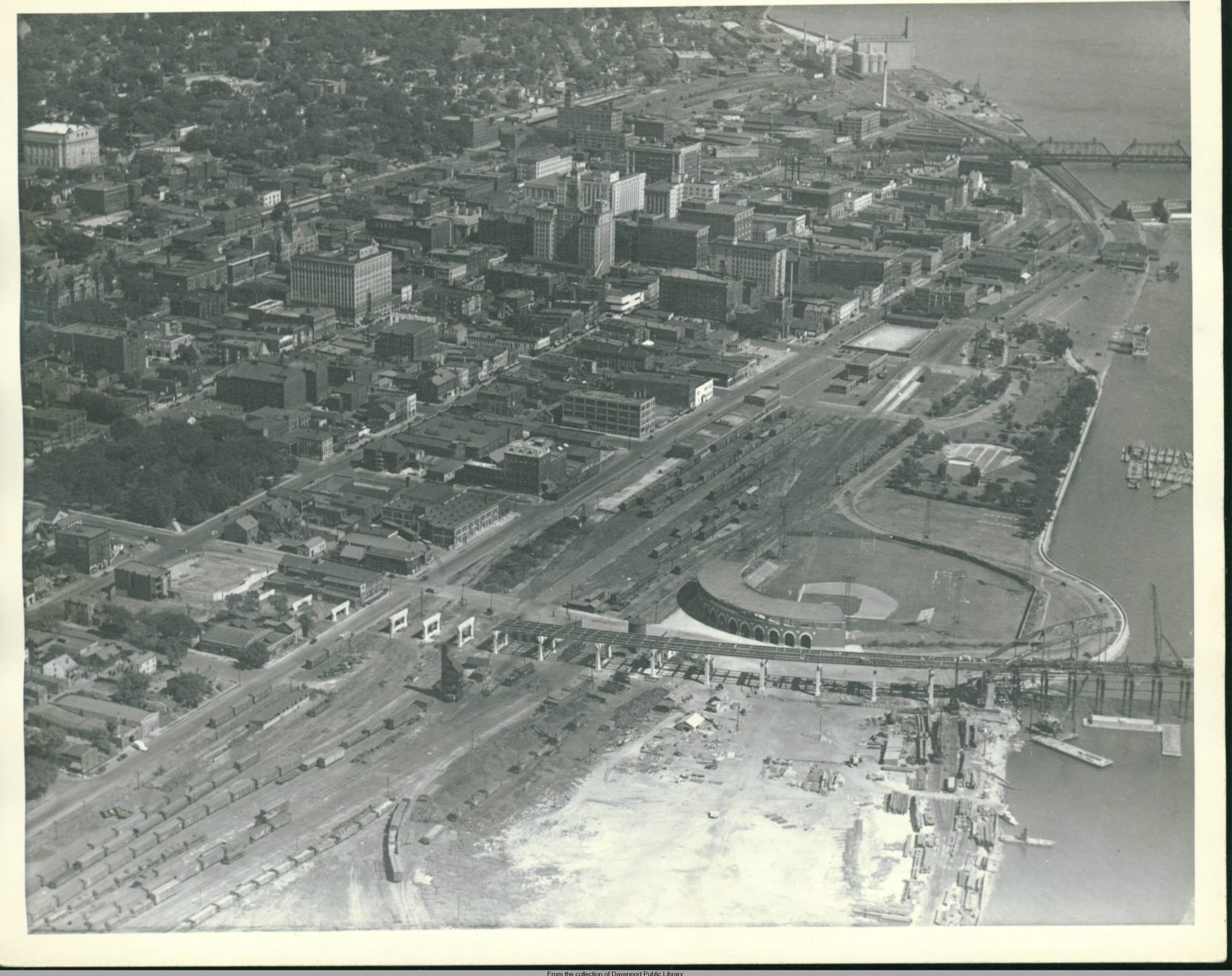
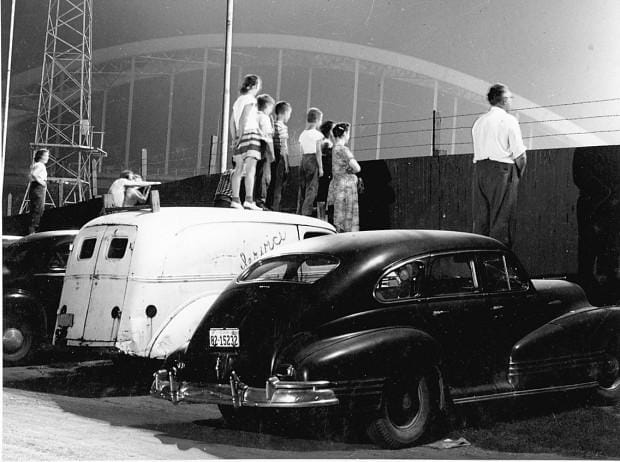
1931 article on the contract for the floodlights | 1931, General Electric, miSci- Museum of Innovation & Science | 1931, General Electric, miSci- Museum of Innovation & Science | 1931, General Electric, miSci- Museum of Innovation & Science | 1936, parade floats, Richardson Sloan Special Collections, Davenport Public Library, UMVDIA | 1946, Christmas show at Davenport Municipal Stadium, Richardson Sloan Special Collections, Davenport Public Library, UMVDIA | 1940 aerial, Richardson Sloan Special Collections, Davenport Public Library, UMVDIA | 1950s, people standing on cars to watch from the outfield
The lights, though, were there from the start, part of the first wave of standards erected a full four years before the first major league night game at Cincinnati’s Crosley Field in 1935. Minor league teams in the Midwest pioneered night baseball, with the first official night game played in Kansas in 1930. A clutch of teams in Iowa were not far behind, including the Davenport Blue Sox–the first tenant here–who played their first night game here on June 4th, 1931 against the Rock Island Islanders.
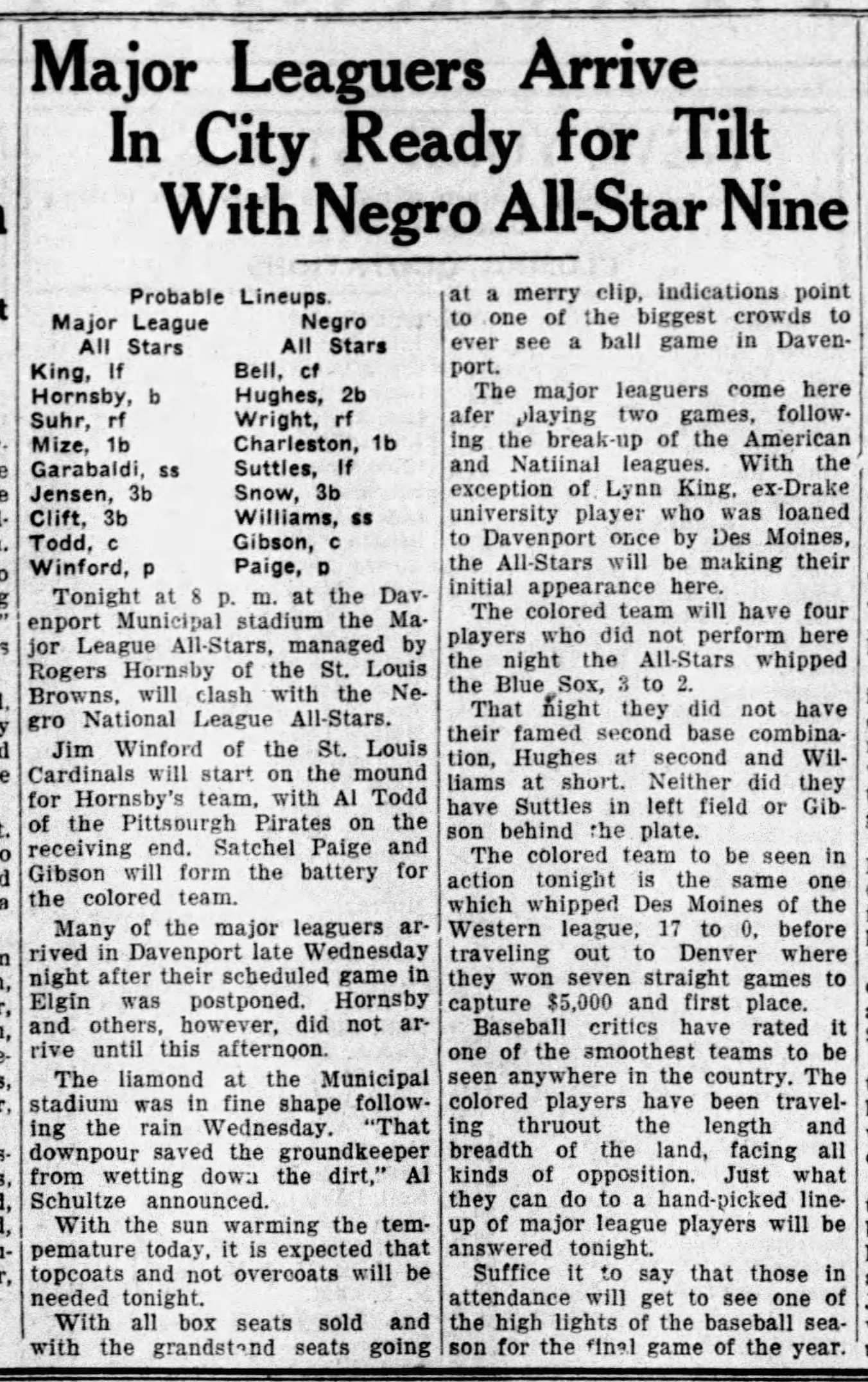
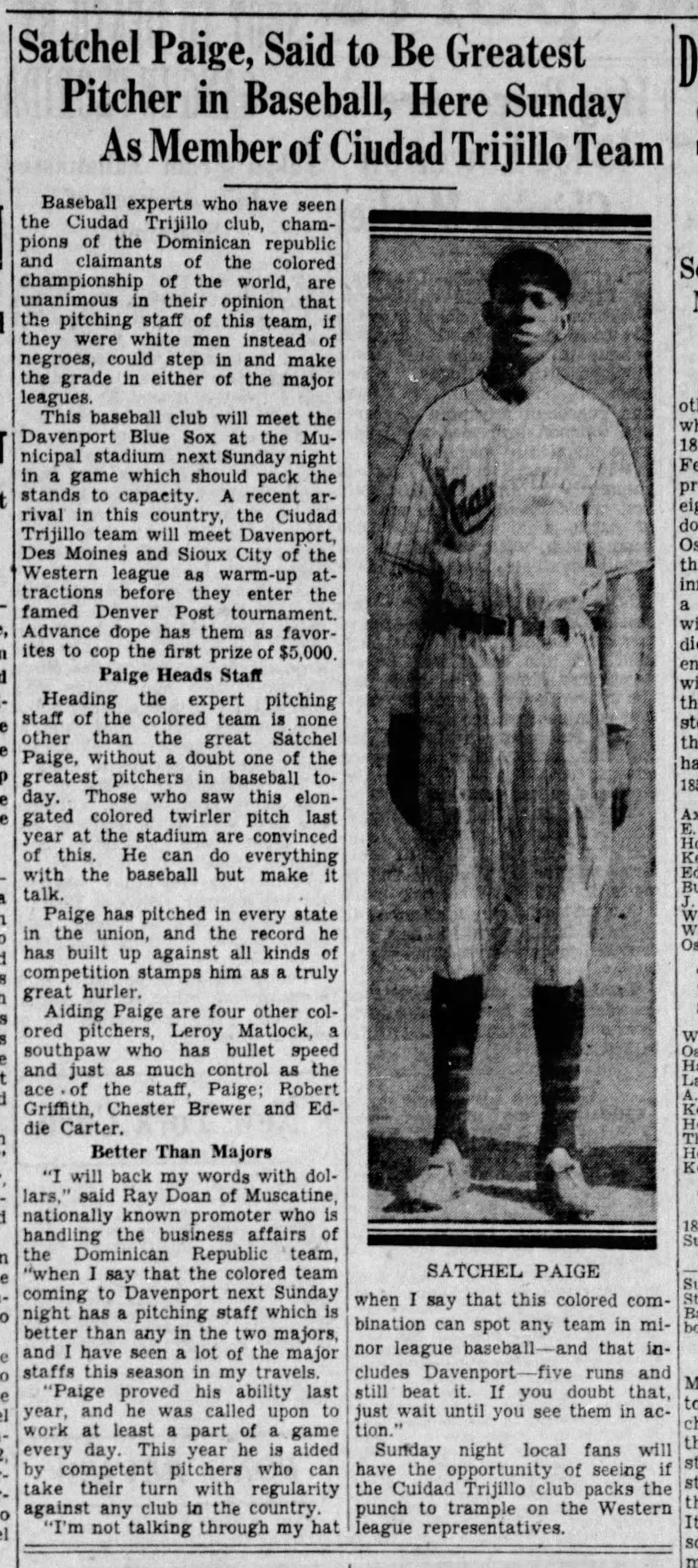

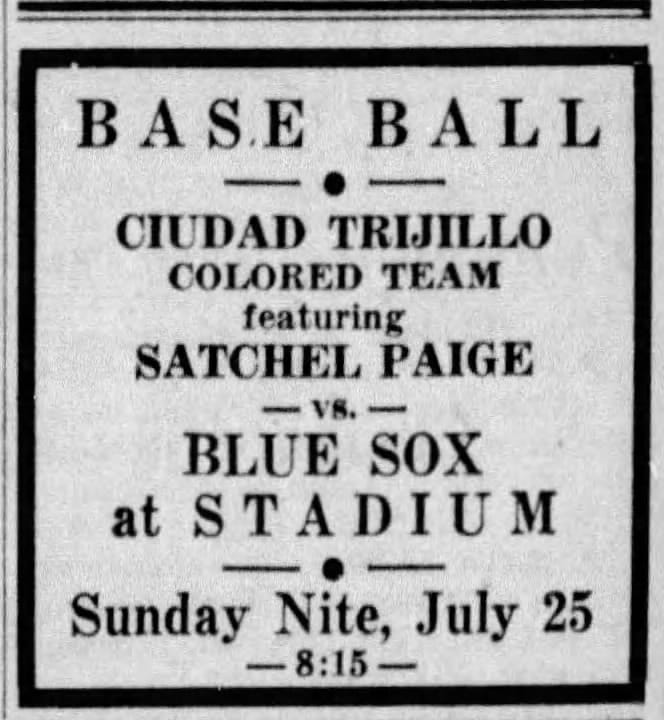
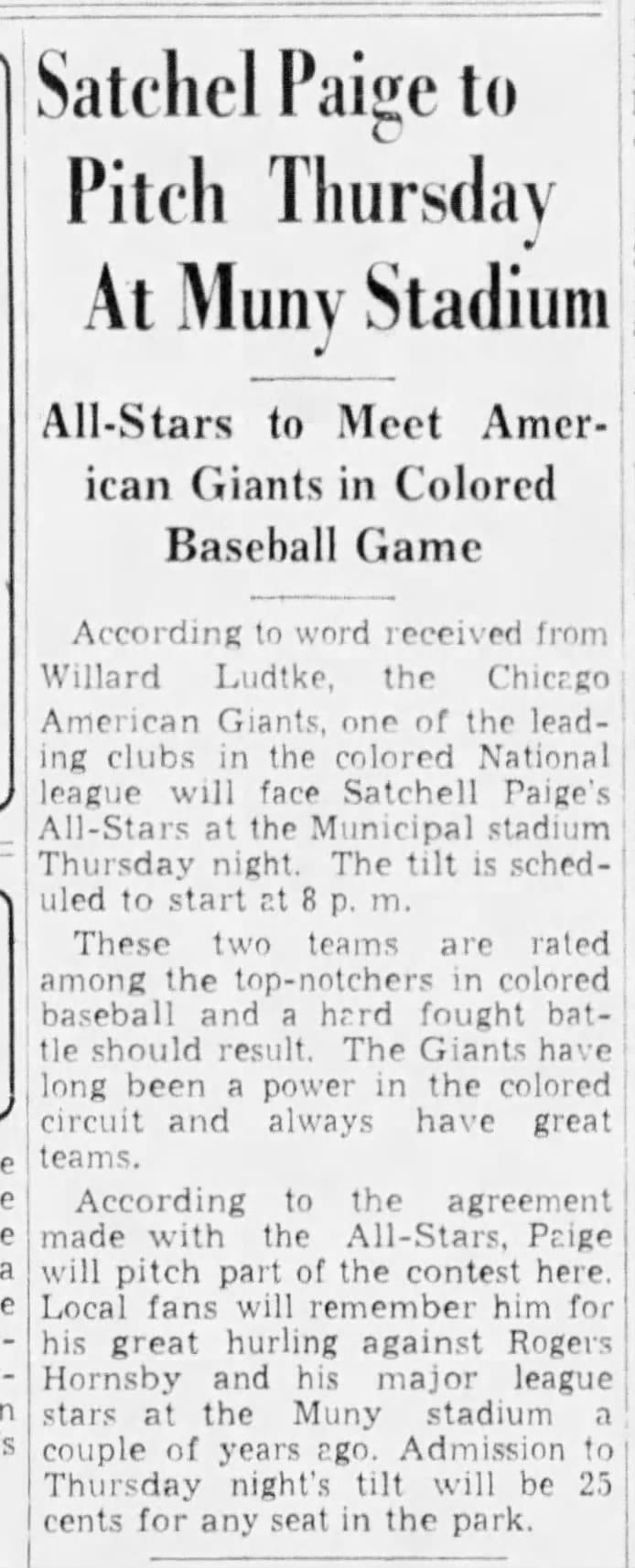

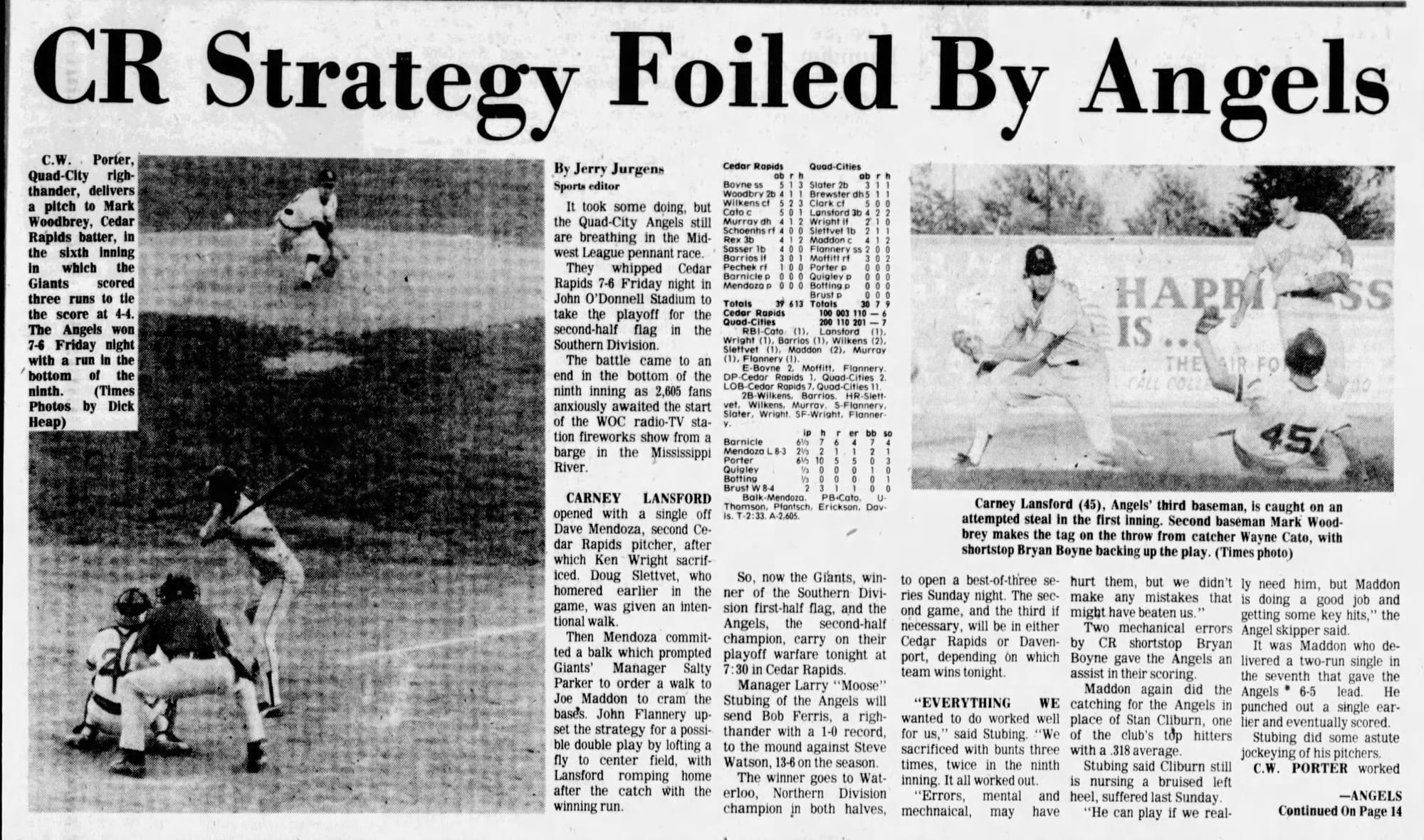
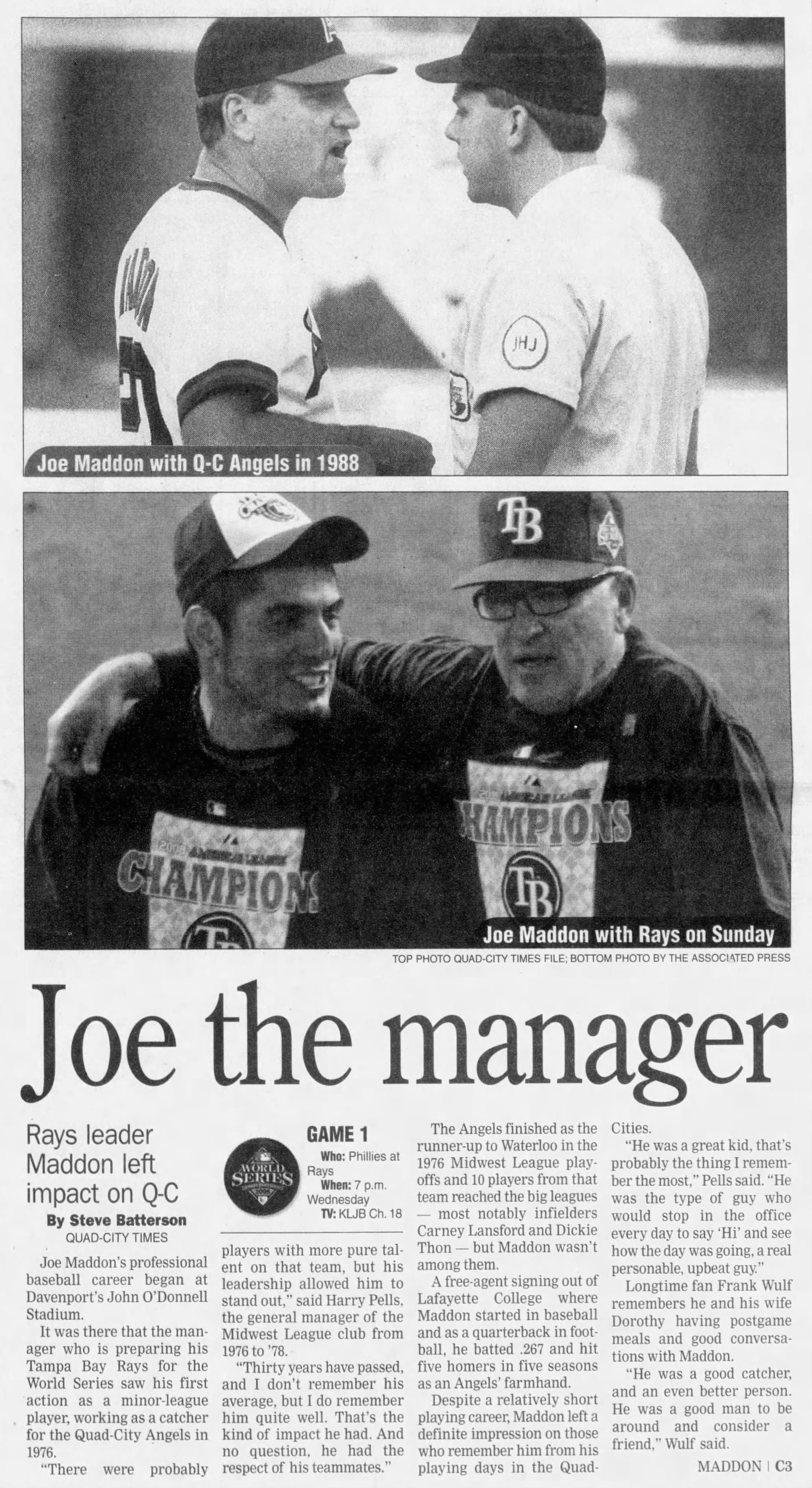
1936, major leaguers in town to play Negro League all-stars | 1937, Satchel Paige plays here with the Ciudad Trujillo against the House of David | 1939, Satchel Paige's Negro League all-stars play the Chicago American Giants | Joe Maddon here as a player in 1976 and reflecting on his time here in 2008
While the Davenport Blue Sox were the first team to sit in the home dugout in this stadium, professional baseball in the city dates back to the 1870s. The Blue Sox, the Quad City Angels, and the present-day Quad Cities River Bandits are some of the longest tenured teams, but there were also the Davenport Quads, the Davenport Riversides, and the Swing of the Quad Cities. The River Bandits franchise was founded in 1960 as the Davenport Braves. Longtime affiliates of the Angels, they’re currently part of the Kansas City Royals farm system. Hall of Famers Jim Bunning, Joe Mauer, and Joe Maddon (well, future Hall-of-Famer) passed through Davenport on their way to the majors, and during the 1930s Negro League All-Stars and Hall-of-Famers Satchel Paige, Josh Gibson, and Cool Papa Bell played barnstorming games here.
A minor renovation in 1989, then the big one from 2002 to 2004, turned the municipal stadium–then known as John O'Donnell Stadium (named for the longtime sports editor of the Davenport Times-Democrat)–into a modern minor league ballpark.
Not without some serious conflict, though. Minor league baseball faces the same dynamic of owner threats and public subsidies that saw the Athletics ripped from Oakland and the Supersonics from Seattle. Owner Kevin Krause felt that the aging ballpark limited his commercial opportunities, and the insufficient flood defenses meant that the River Bandits played much of their 2001 season in Moline when the Mississippi River flooded Davenport.
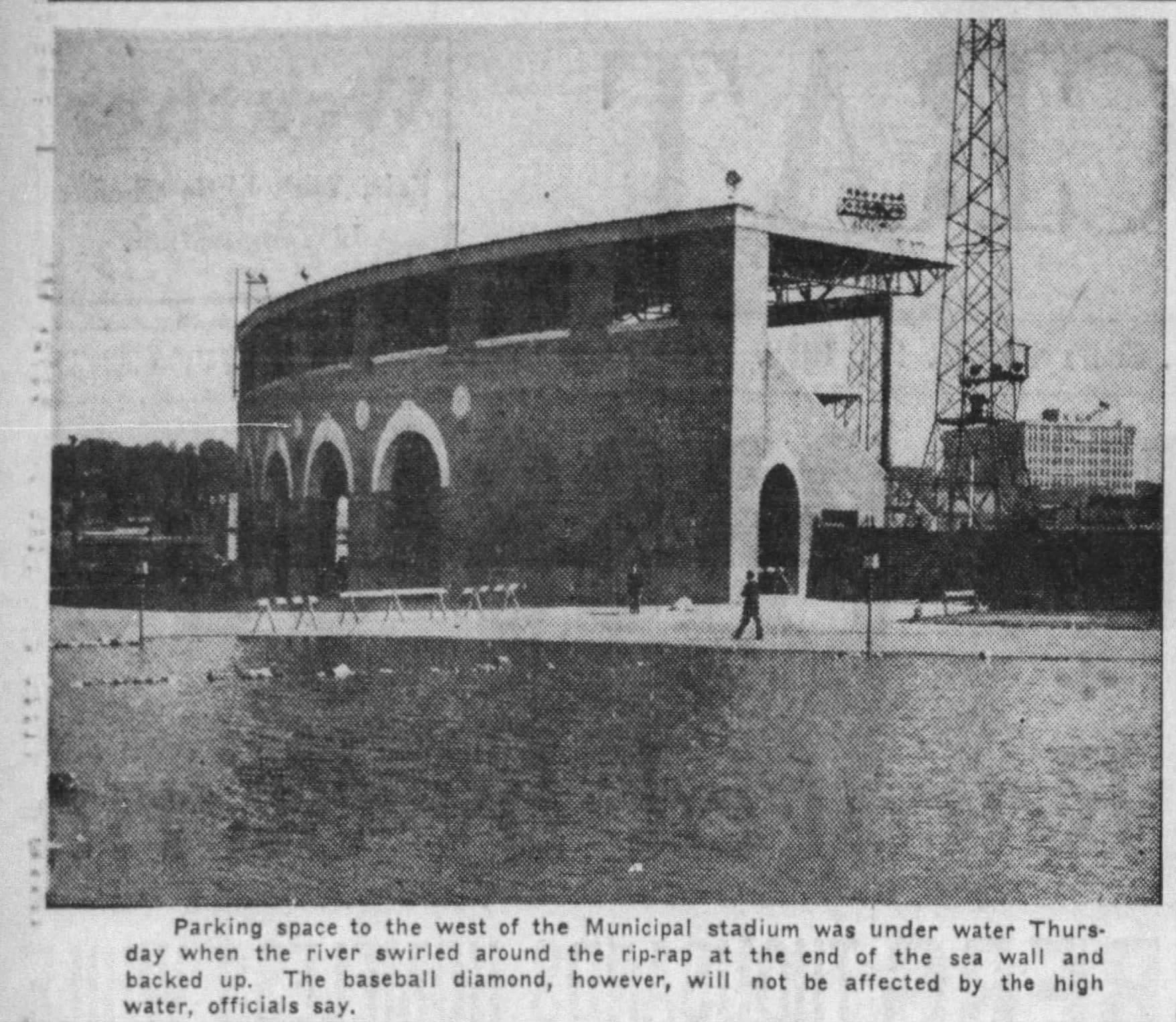
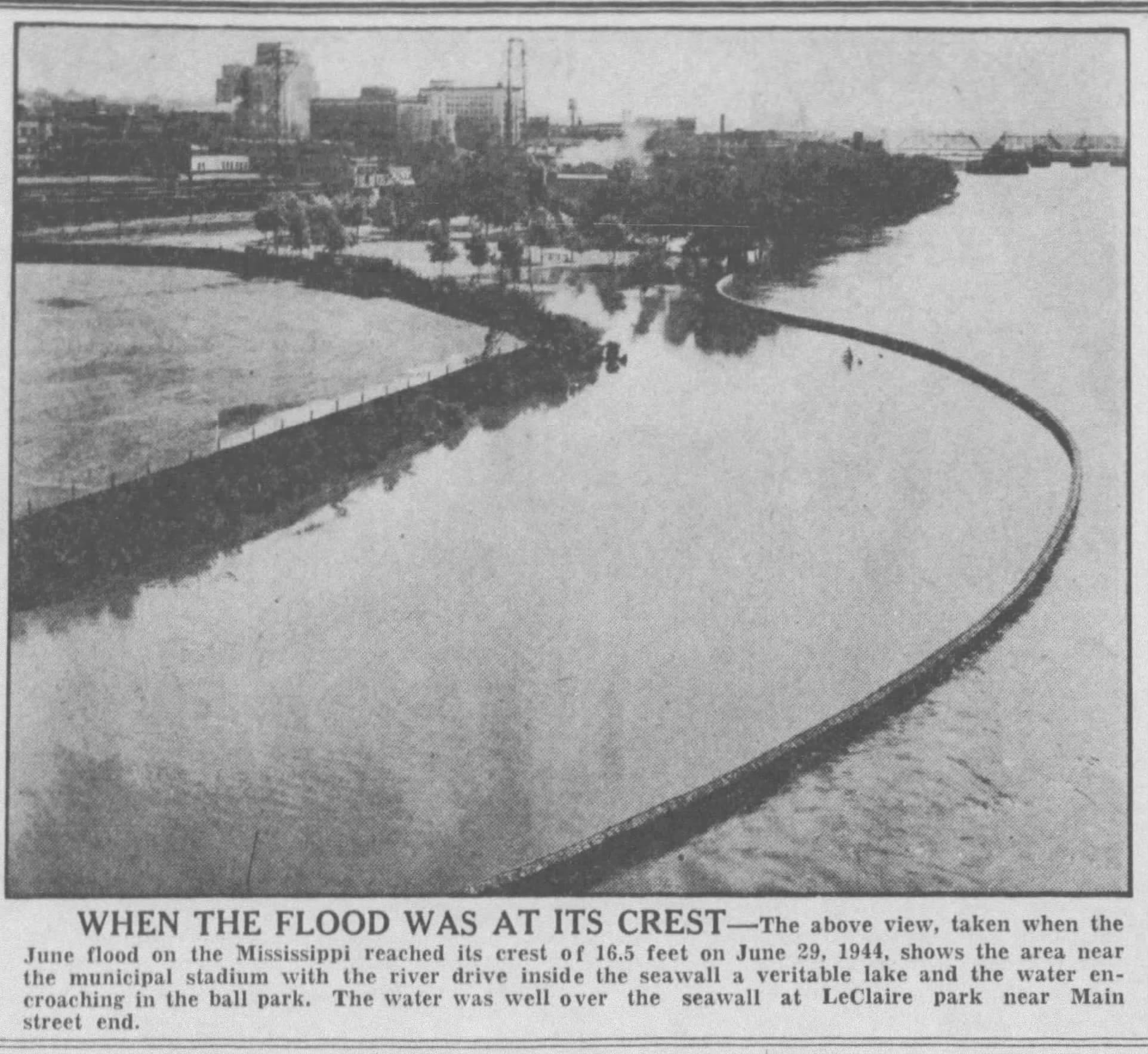
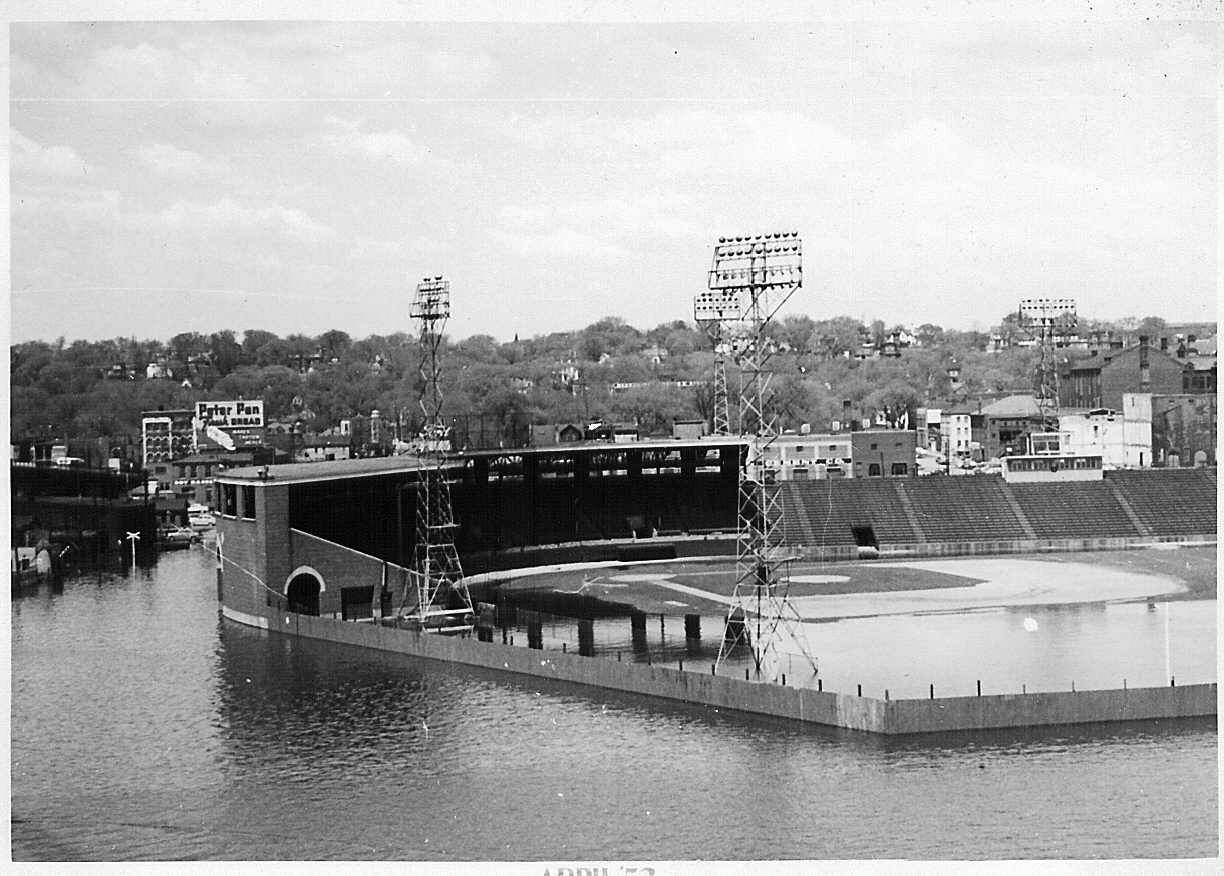
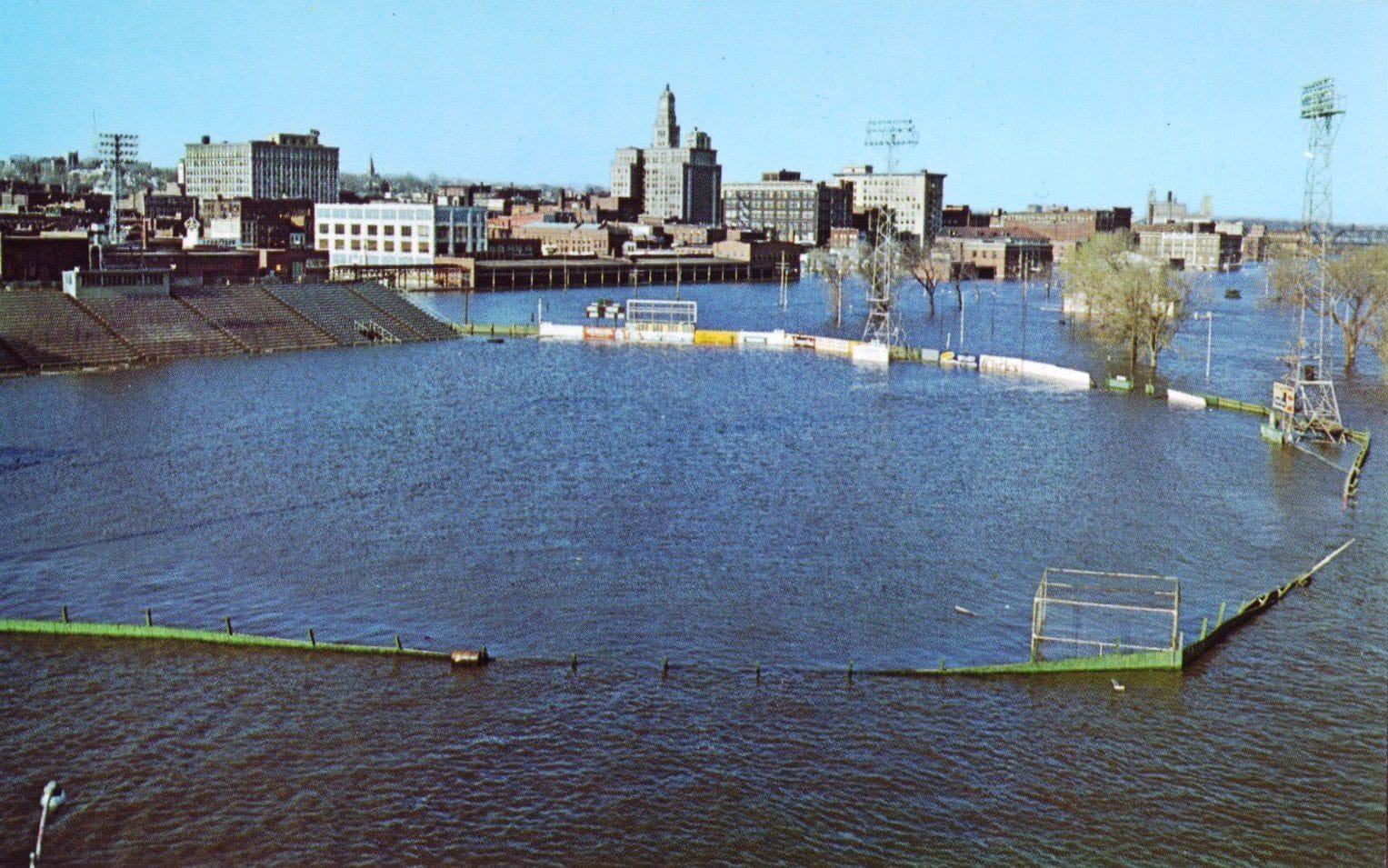
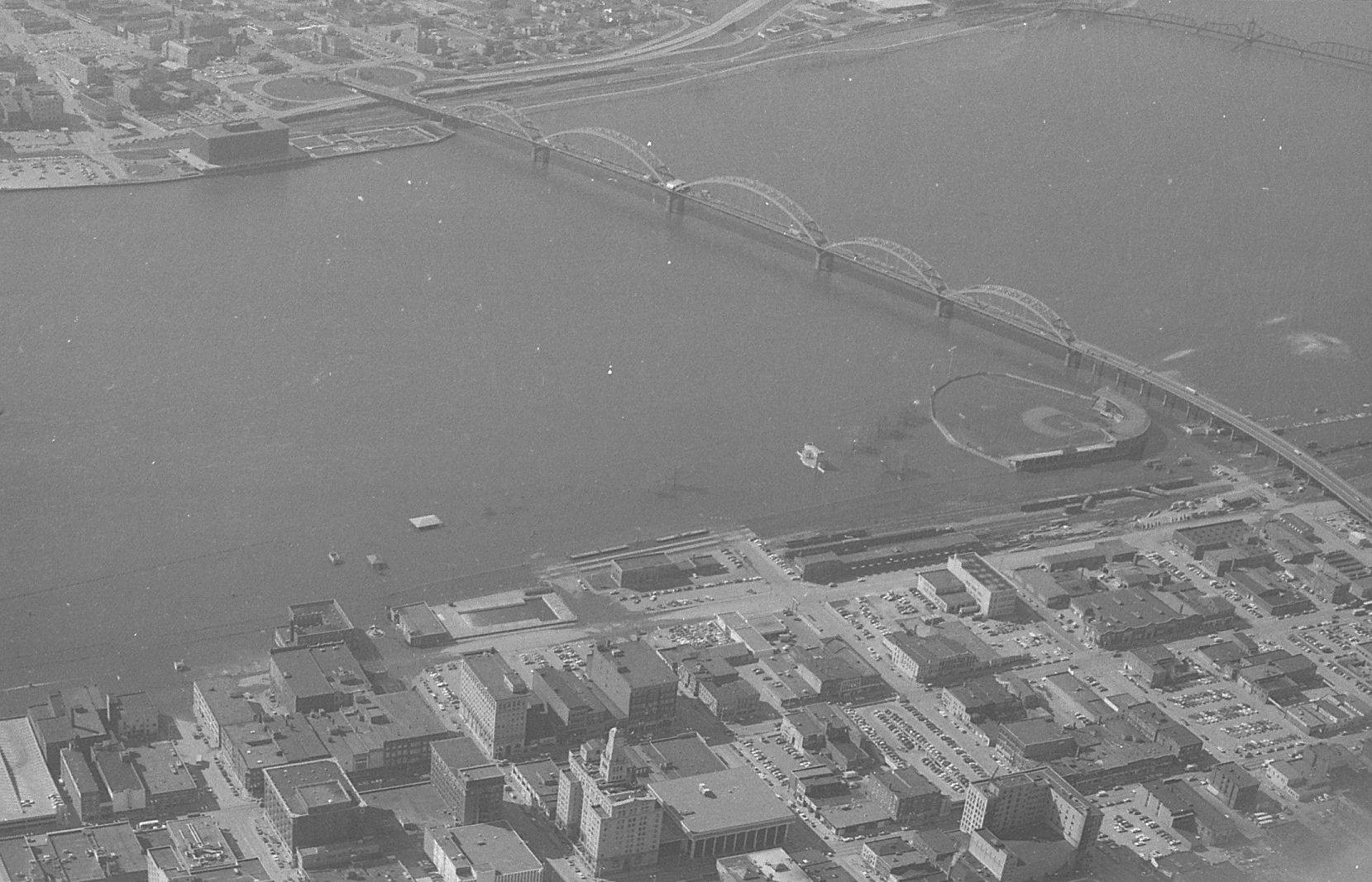
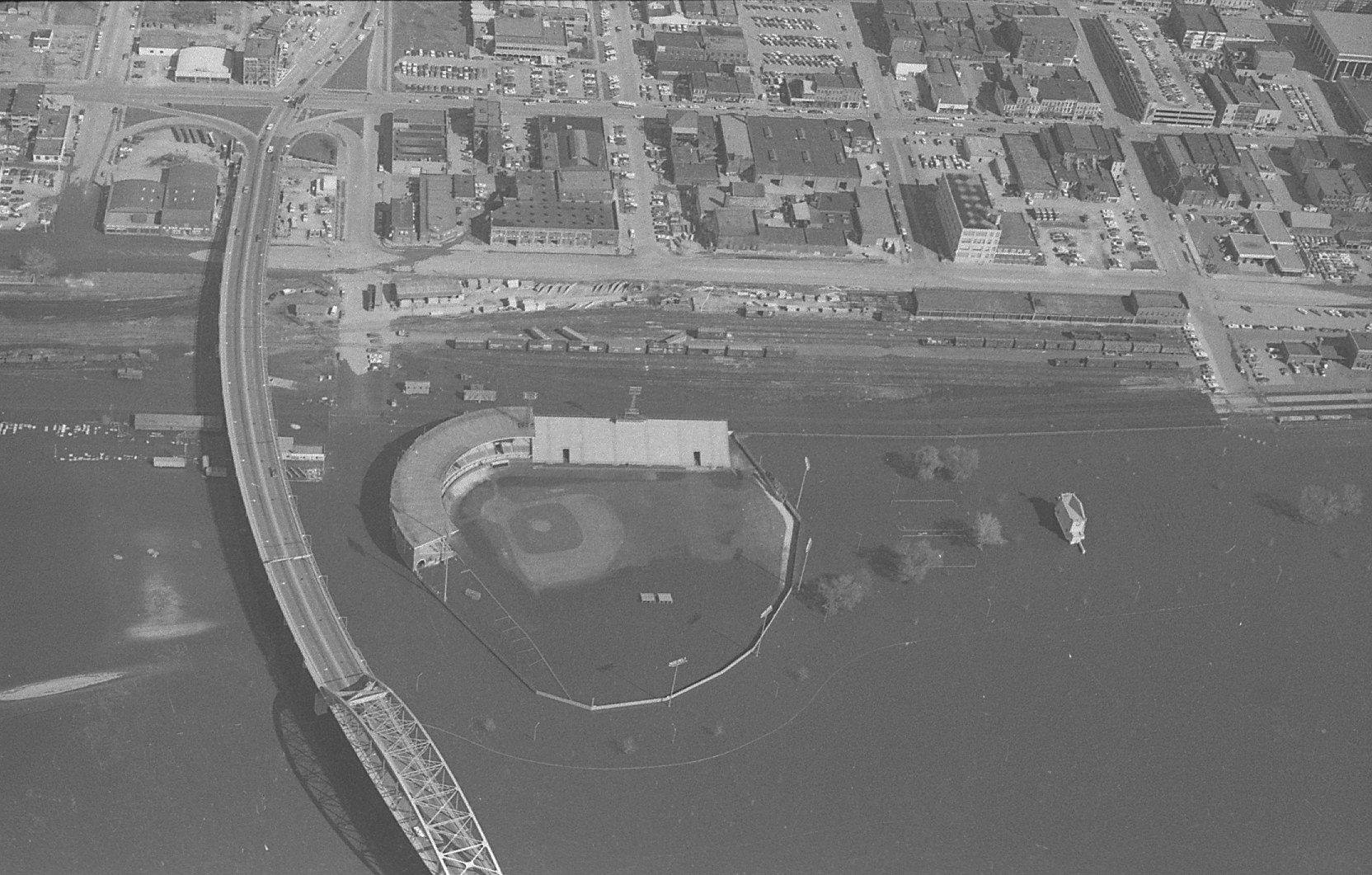
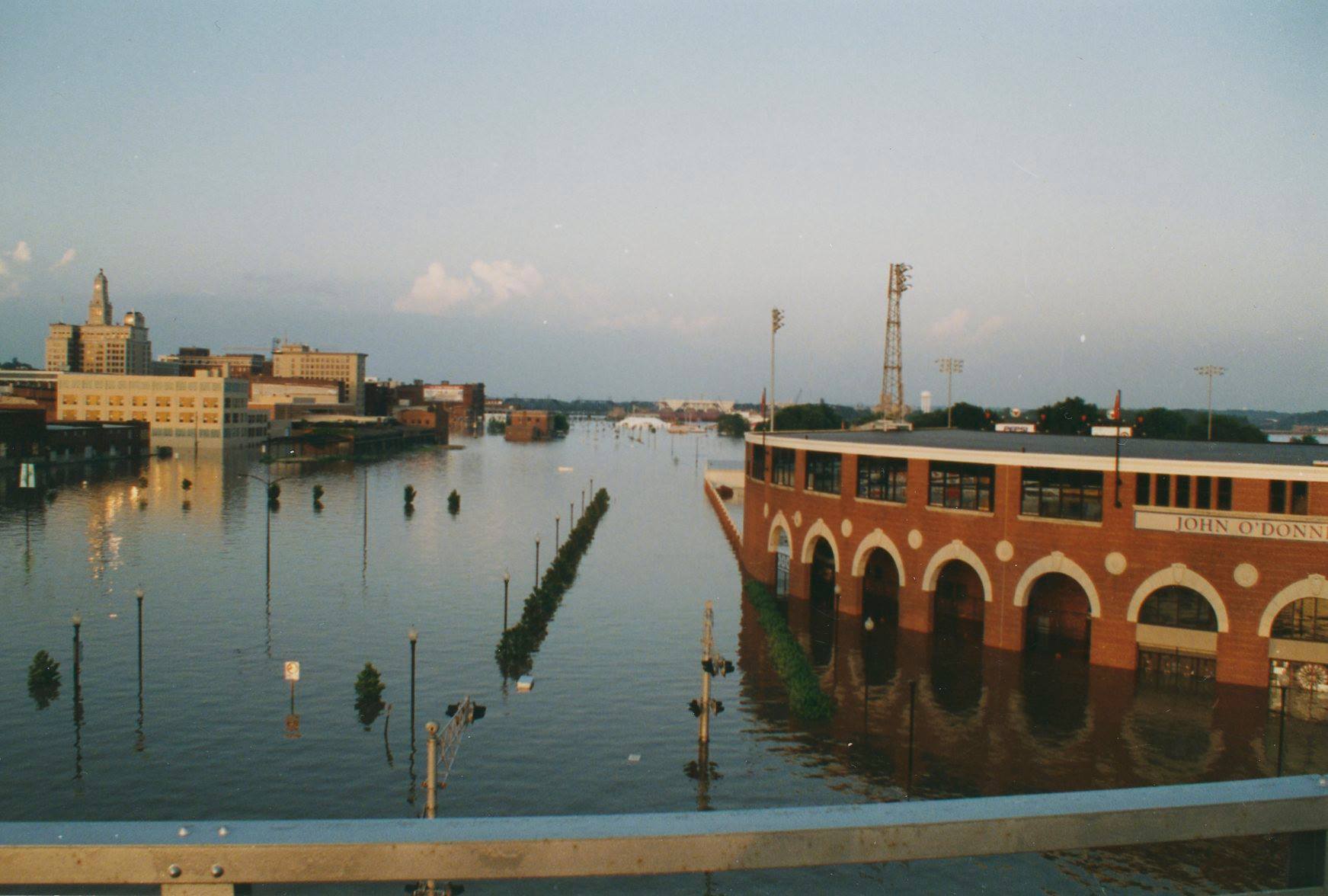
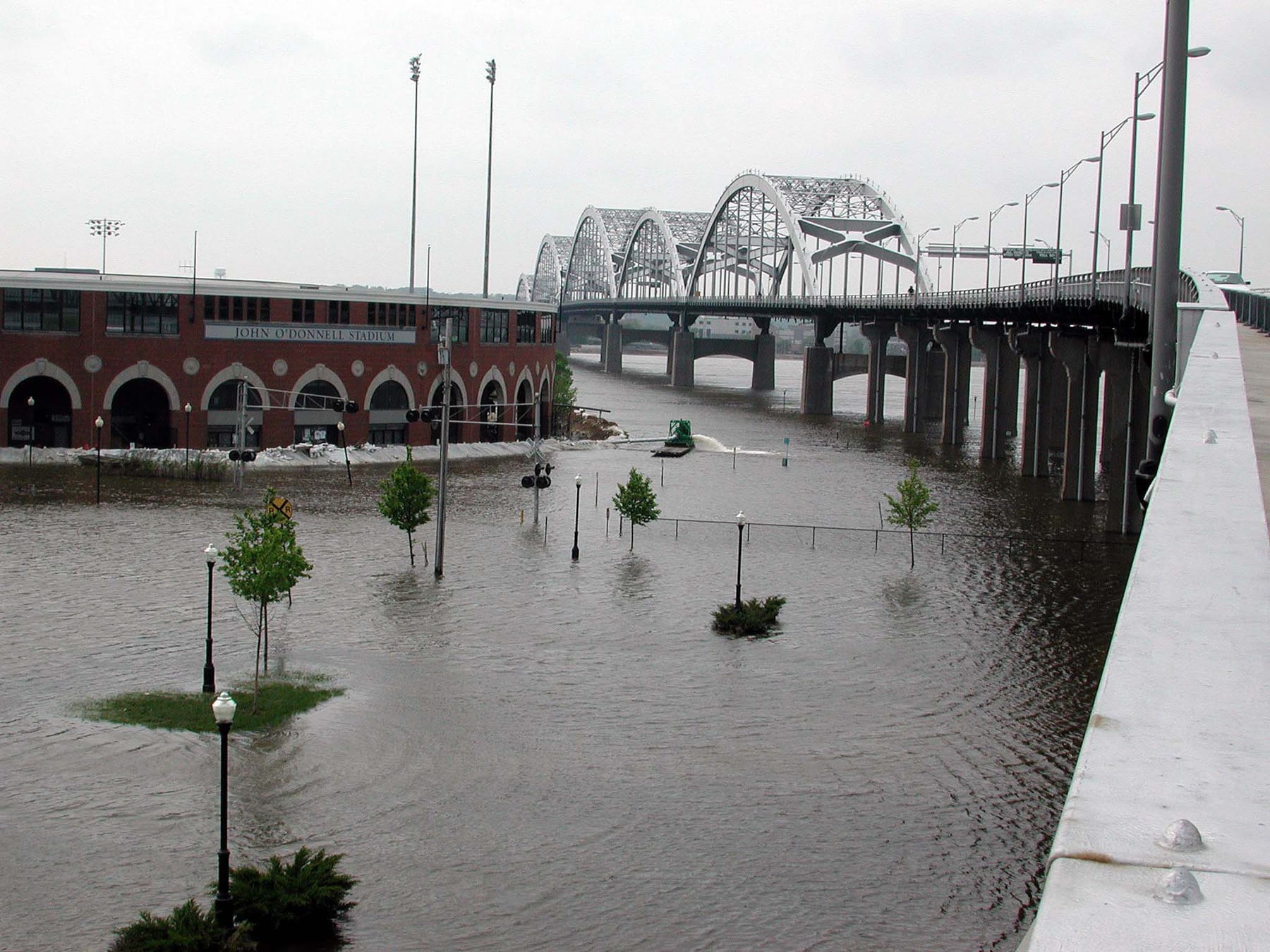
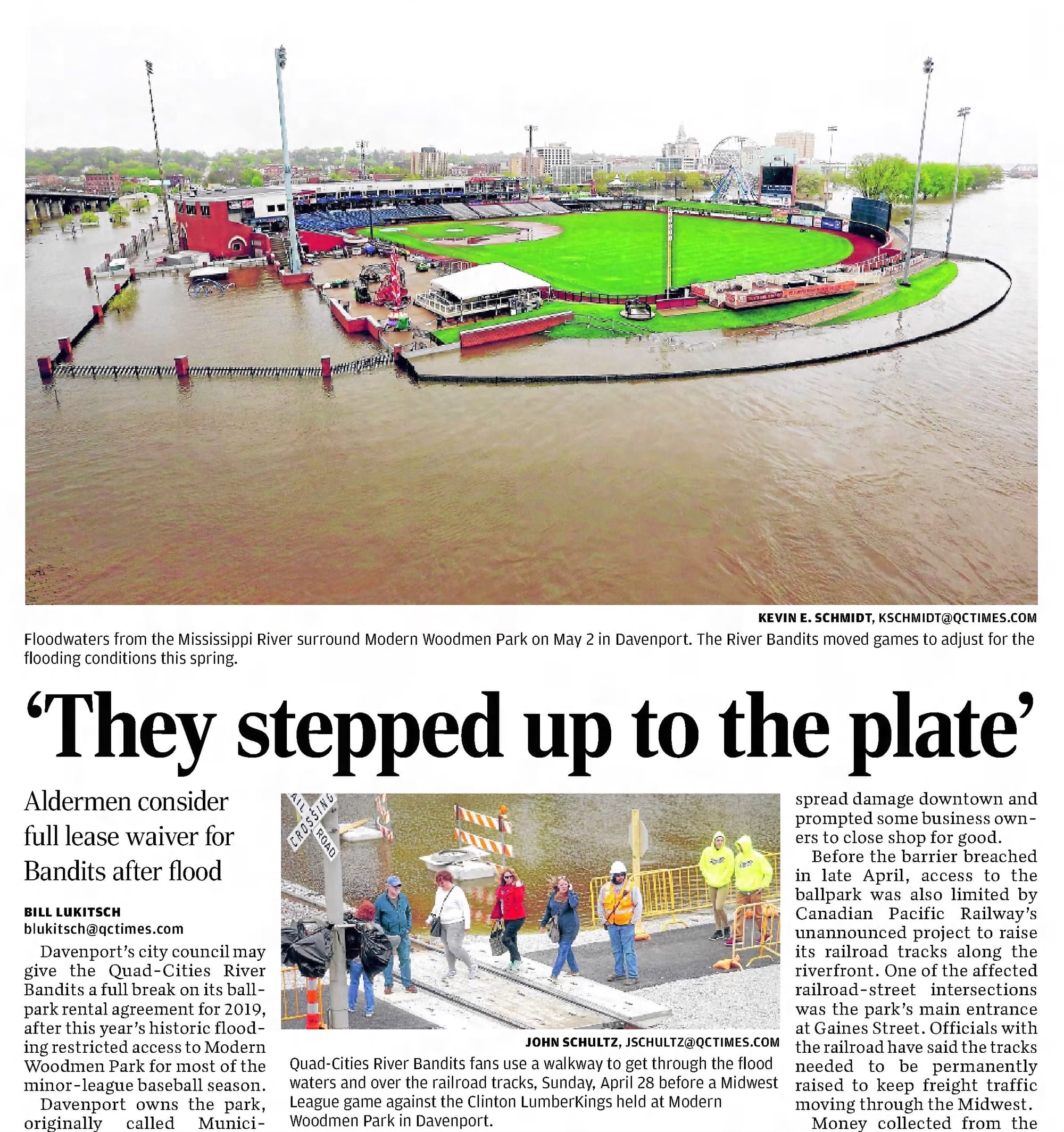
1938 flood | 1944 flood | 1952 flood | 1965 flood | two aerials from the 1972 flood | 1993 flood | 2001 flood | 2019 flood
The team’s major league affiliate at the time, the Minnesota Twins, had their own reservations about the stadium–the obsolete facilities weren’t good enough for their prospects.
After the City of Davenport refused to finance the modernization of the stadium, River Bandits owner Kevin Krause agreed to sell the team to an ownership group who would move the team to Eastlake, Ohio. That deal fell apart at the last hurdle (a team from Georgia ended up in Ohio instead), which brought the city and the team back to the negotiating table. With the lingering threat of the team leaving Davenport–Krause tried to convince Moline to build him a ballpark across the river–the city agreed to rebuild the stadium in a $13.8m project ($25m today). The city pledged $6.5m in public money, with the team chipping in $2.8m, and the last $4m or so coming from the state, the county, naming rights, and a ticket surcharge.

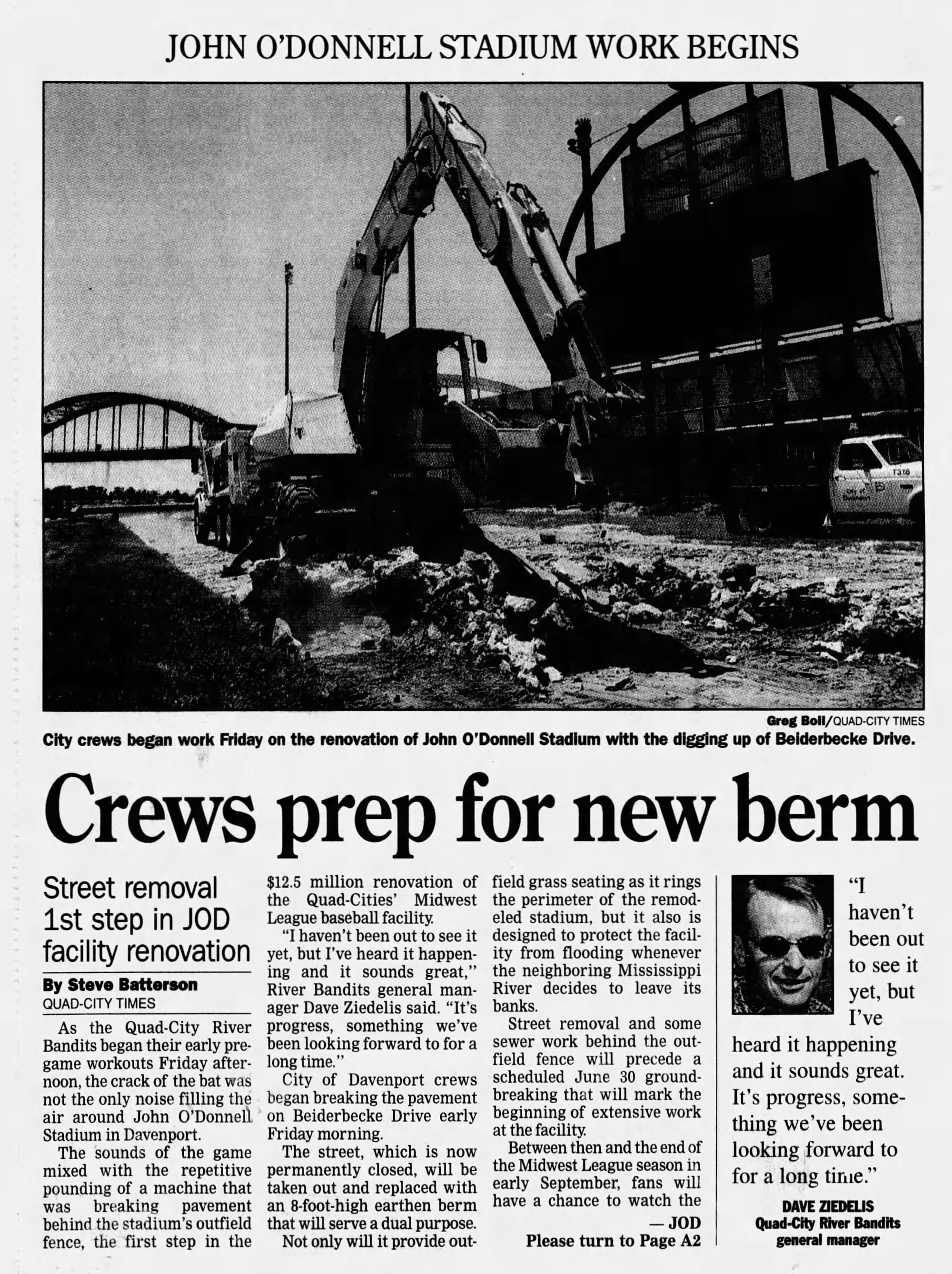
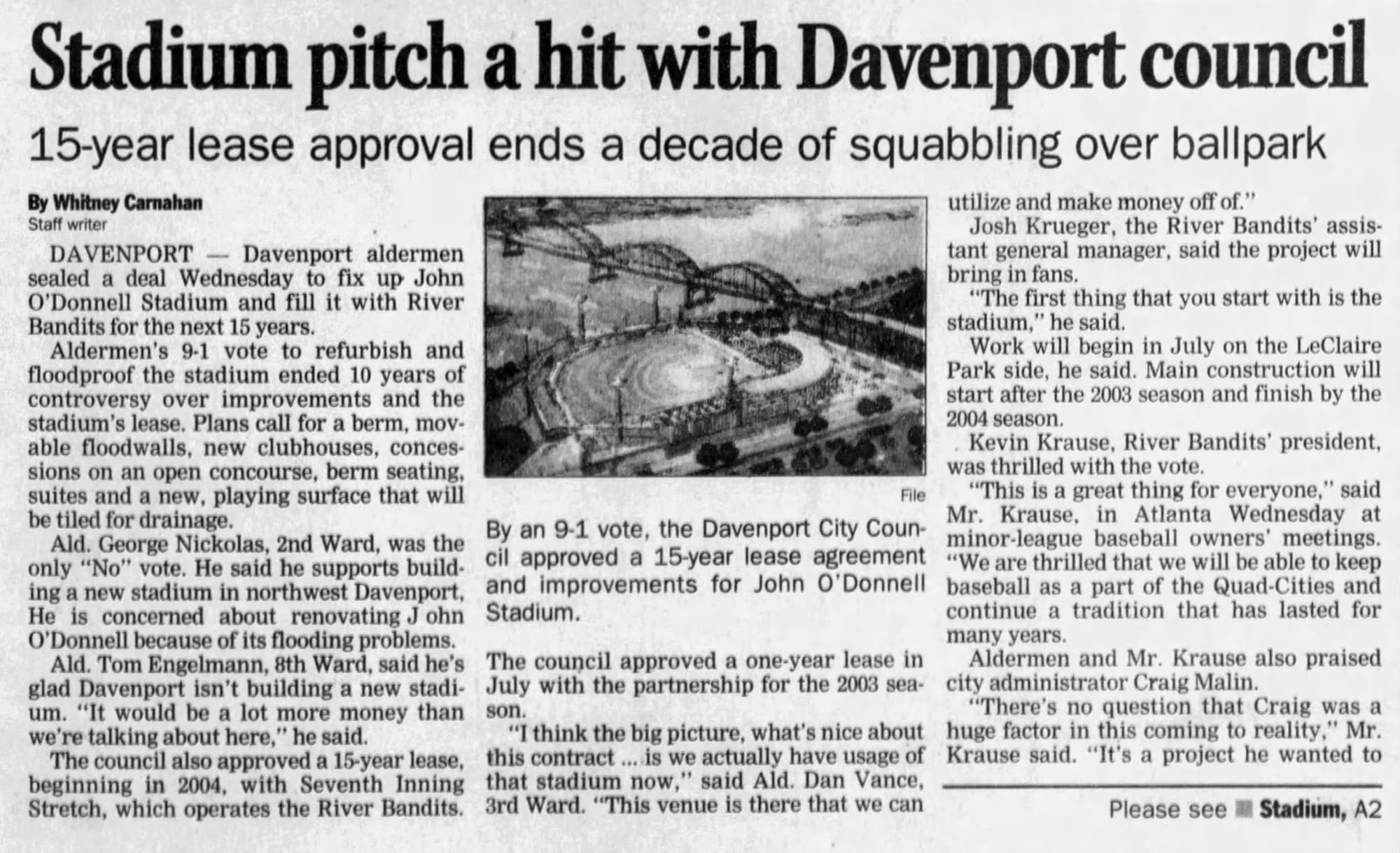
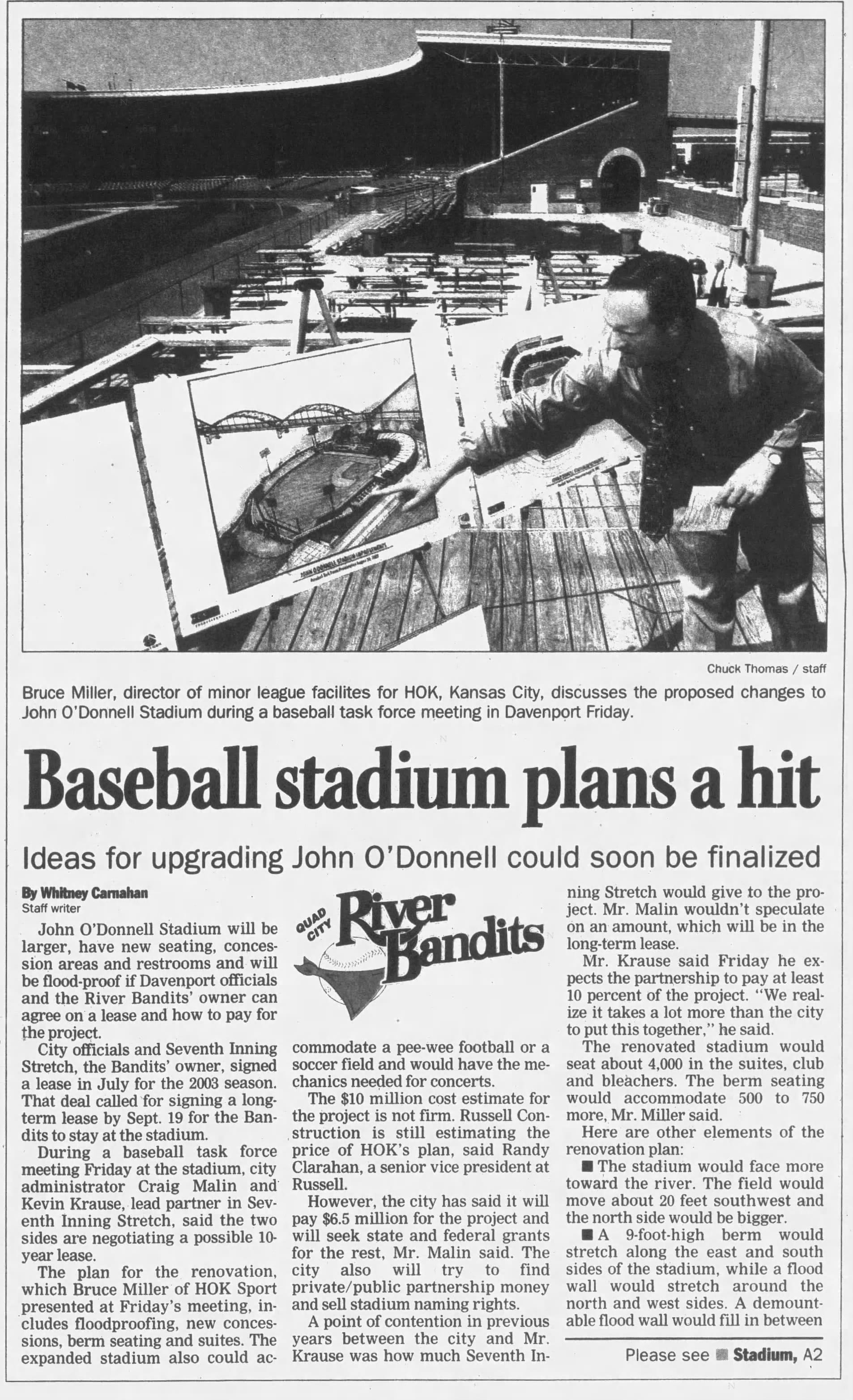
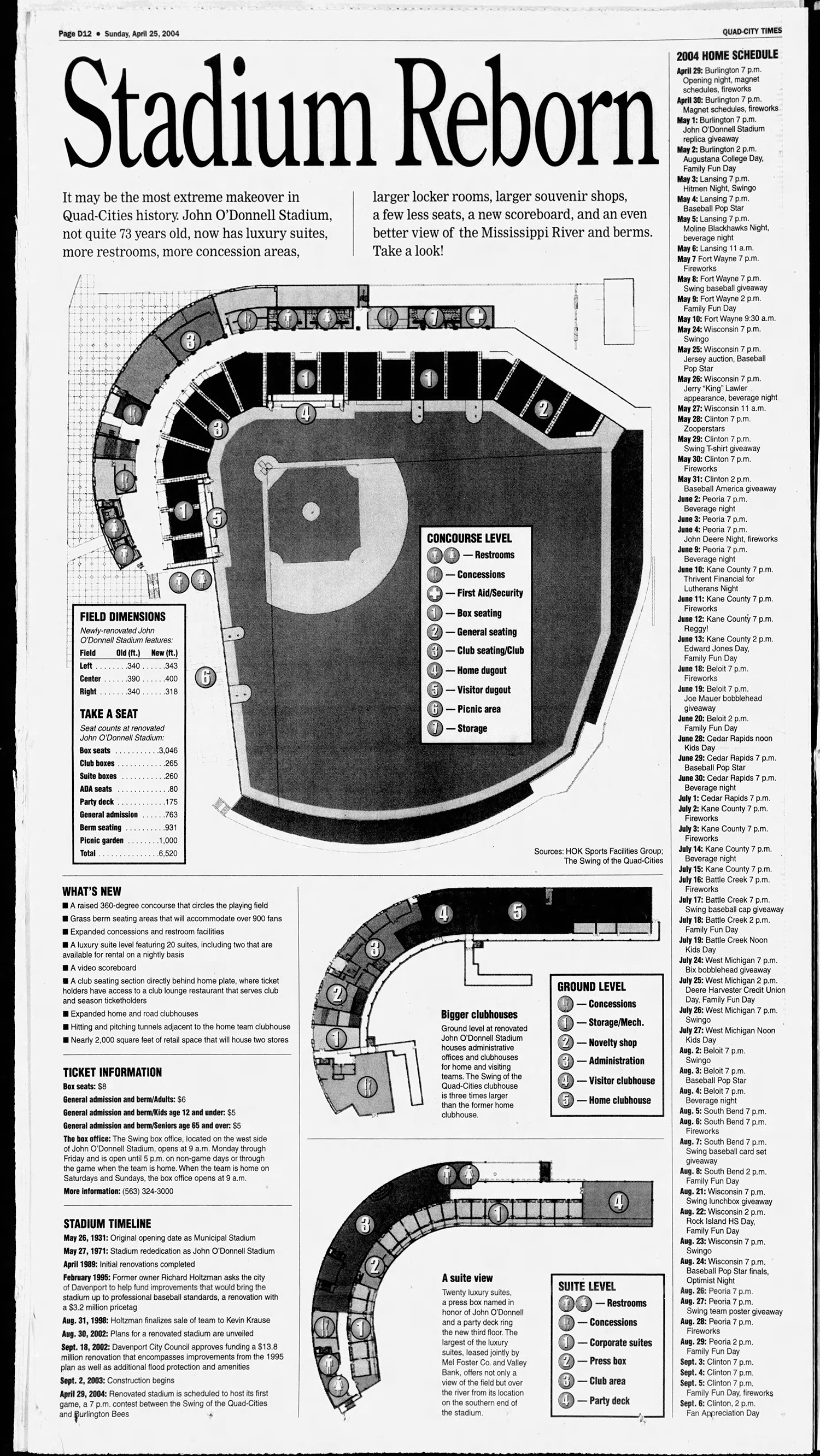
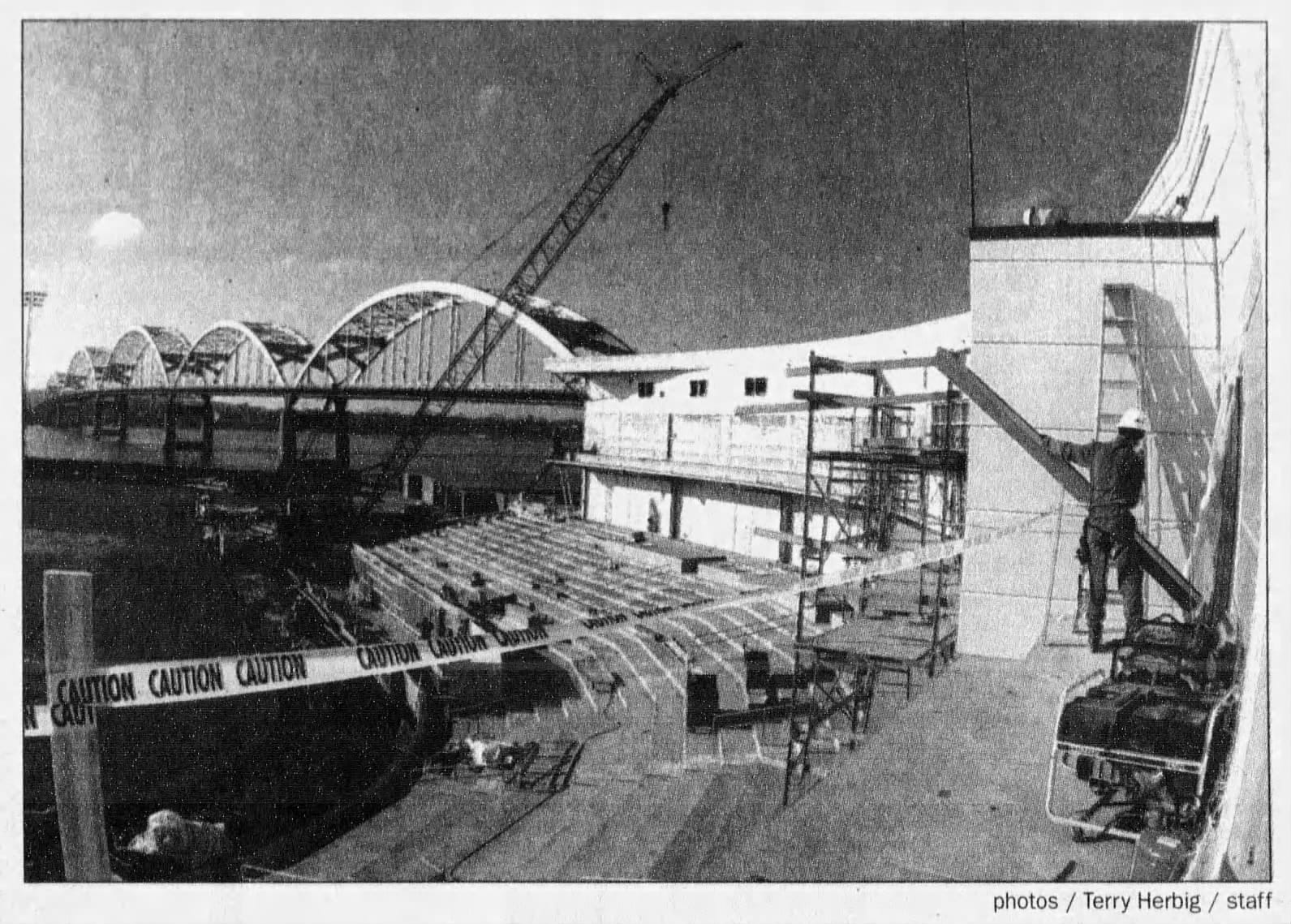
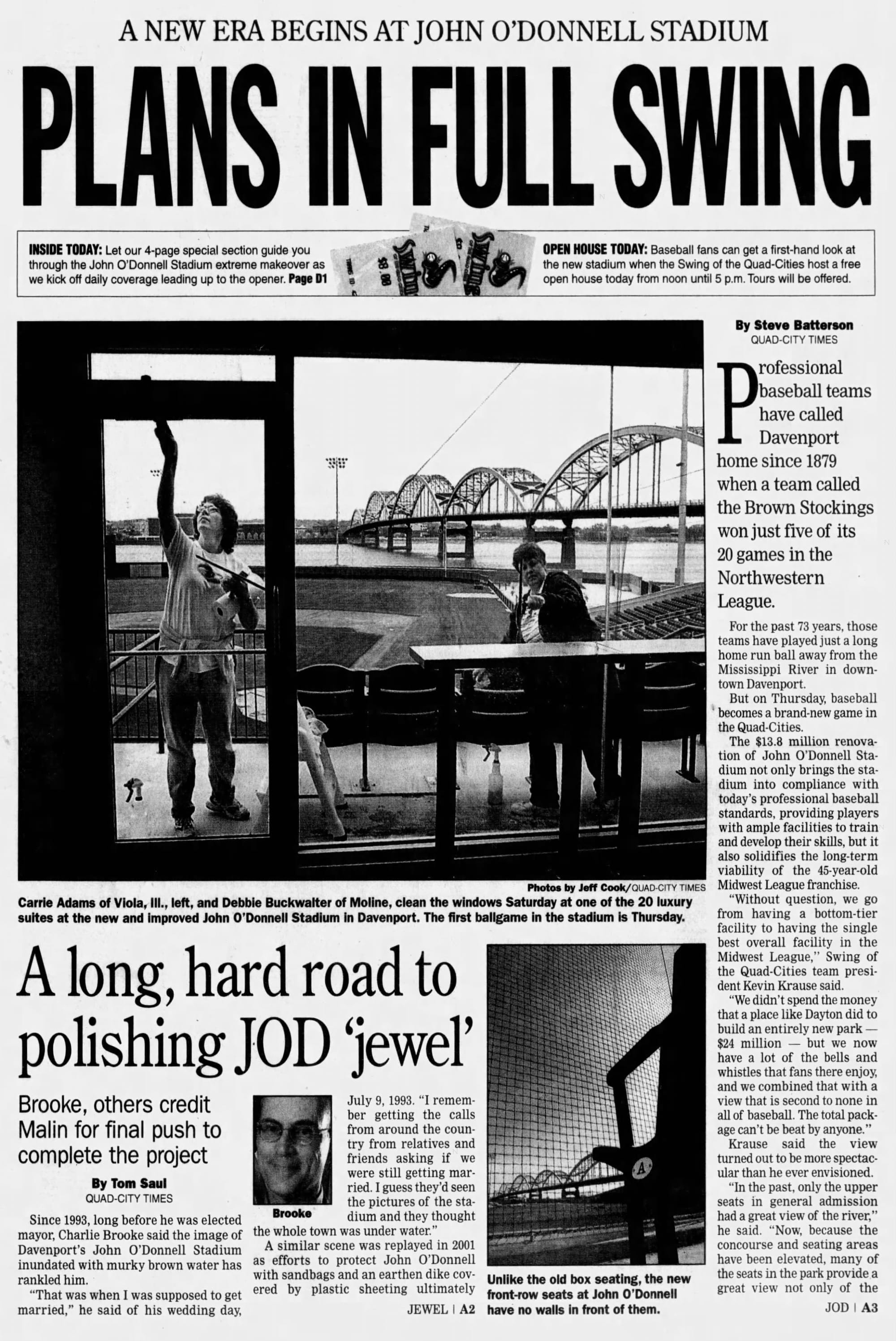
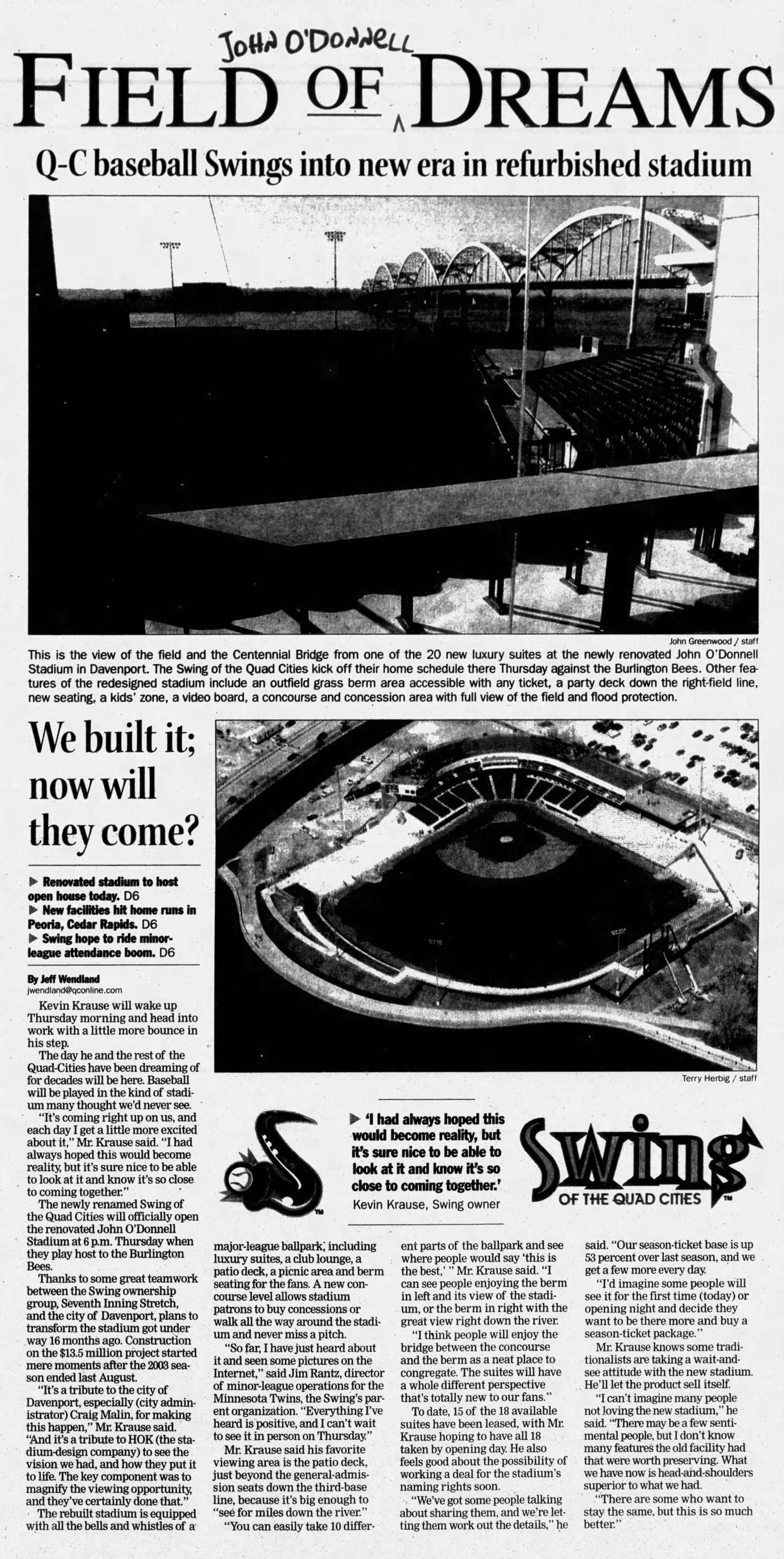
2002-2004 articles on the stadium rebuild
HOK Sport (now known as Populous), the firm that transformed ballpark design with Baltimore’s Camden Yards in the 1990s, designed the rebuild. HOK Sport’s influence extended beyond their MLB work, with highlights like PNC Park in Pittsburgh (and lowlights like new Yankee Stadium)–the firm designed dozens of MiLB parks, from Akron to South Bend to Durham. It’s a pretty park and a singular setting catch a baseball game.
The renovated John O’Donnell Stadium opened in 2004, with the team rechristened the Swing of the Quad Cities. Modern Woodmen of America, the fraternal benefit society whose headquarters stand across the river, bought the naming rights in 2007. The improved flood defenses protected the stadium from record-setting floods in 2019, and just this year the Quad Cities River Bandits were able to continue playing as normal (on “Ballpark Island”) while a rising Mississippi cut the stadium off from the rest of Davenport this year.
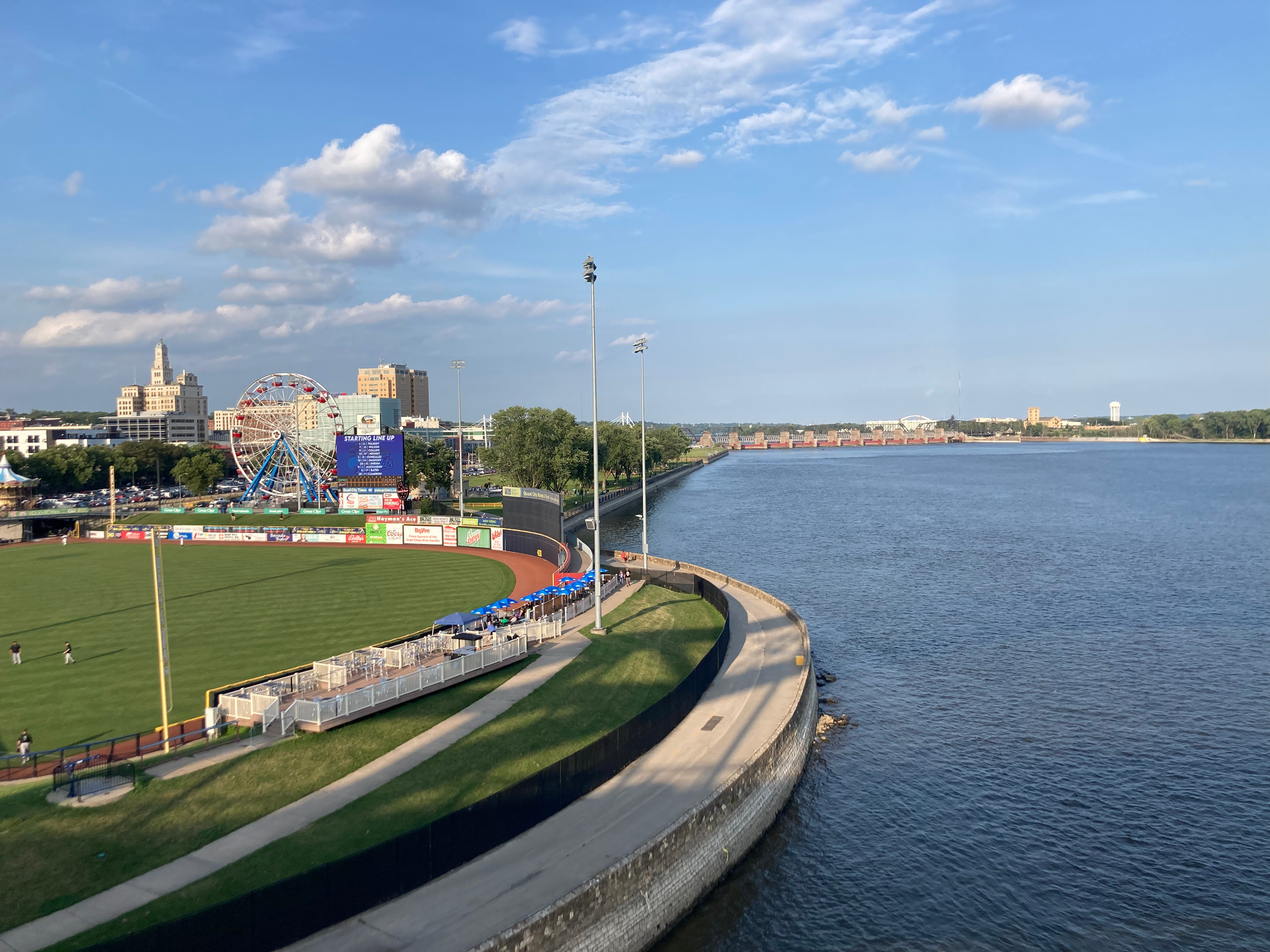
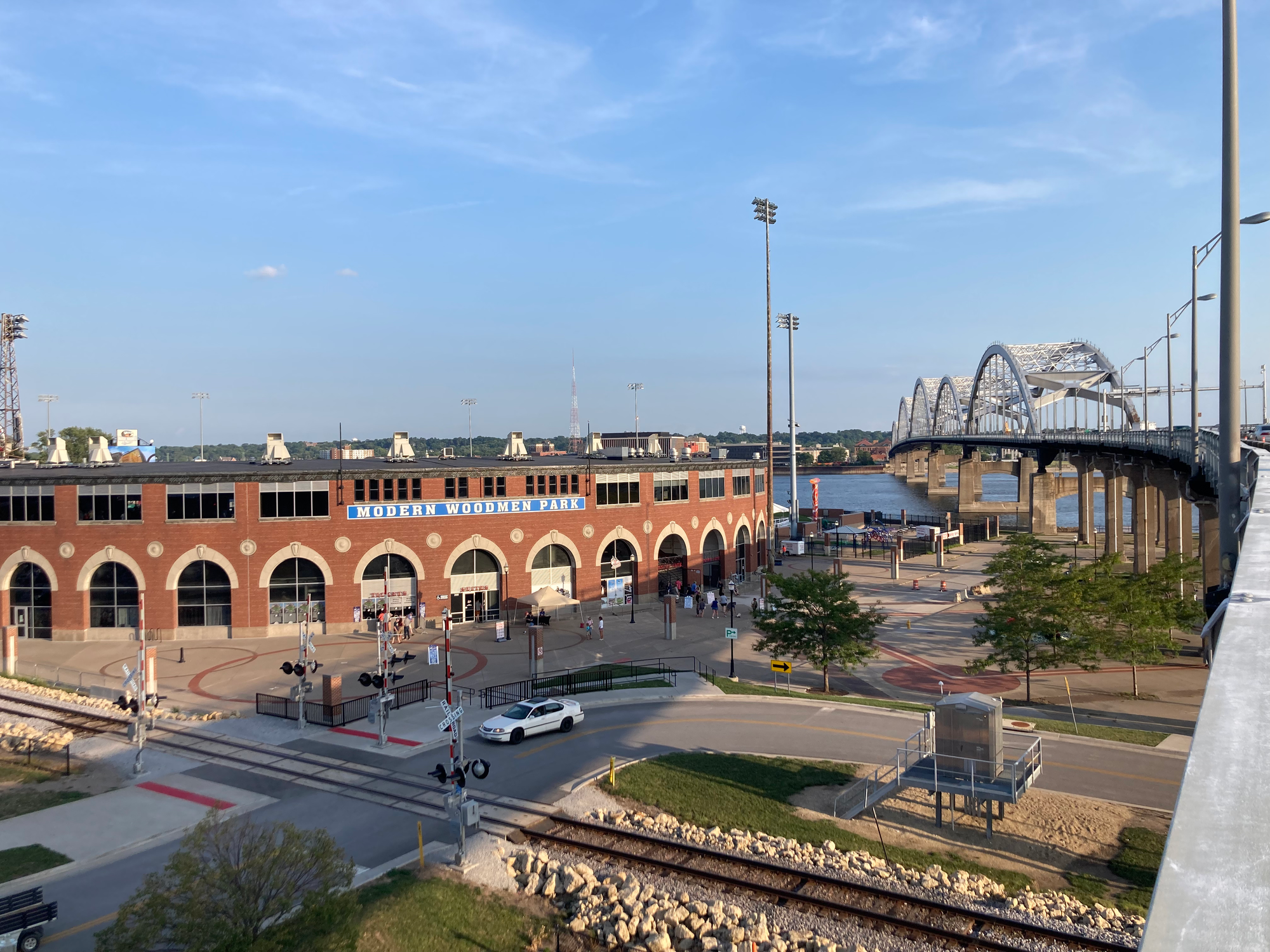
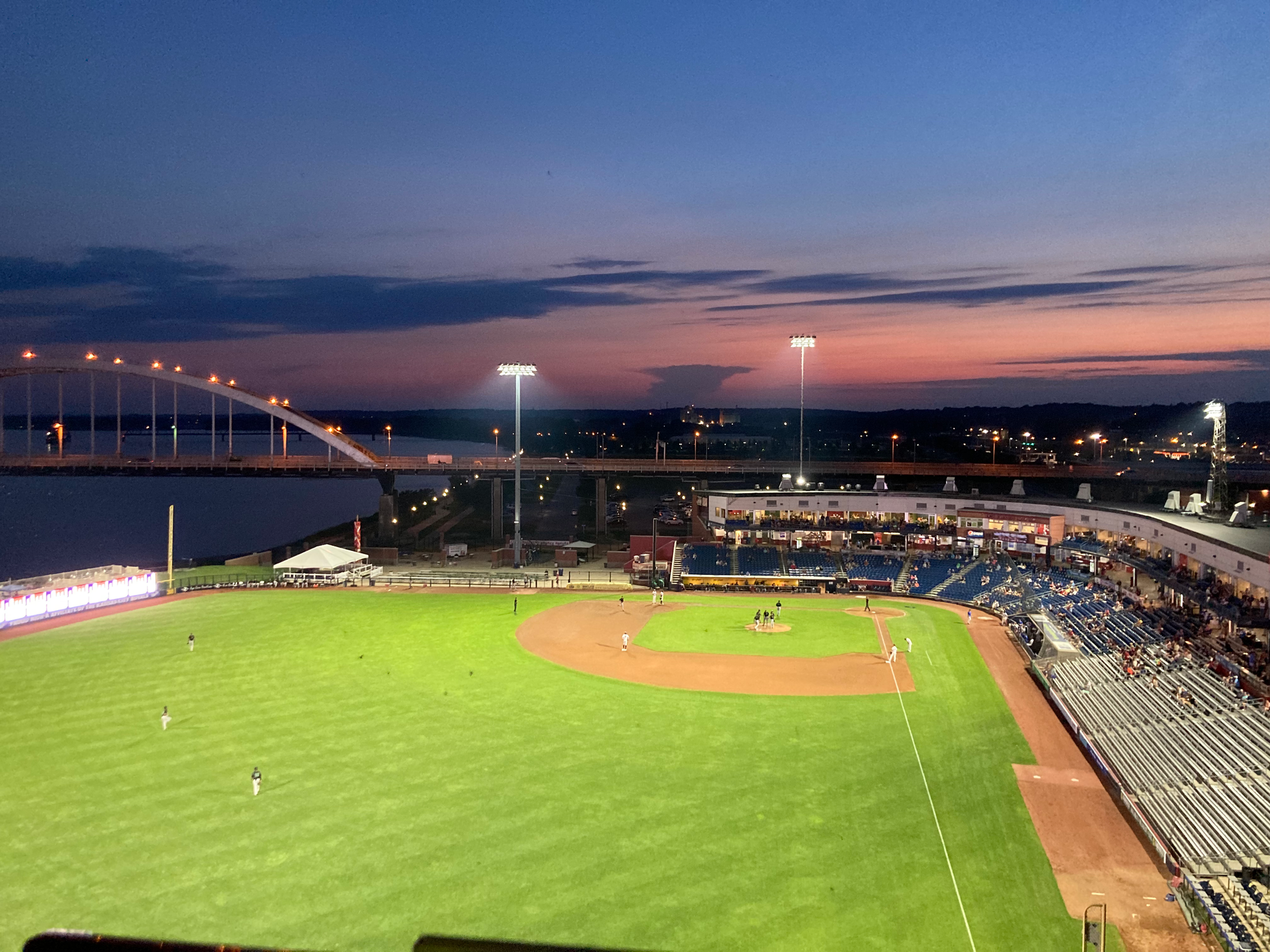
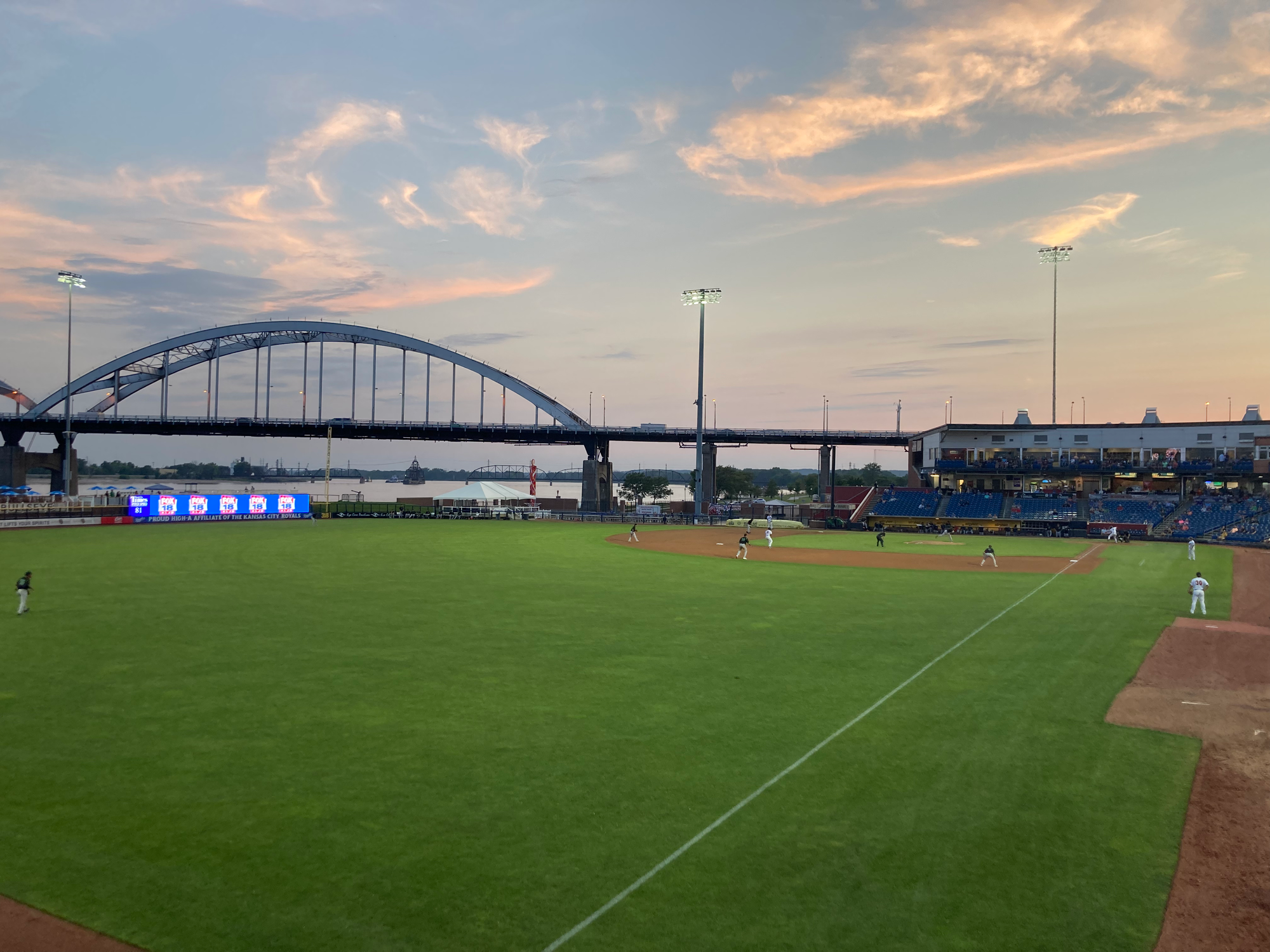
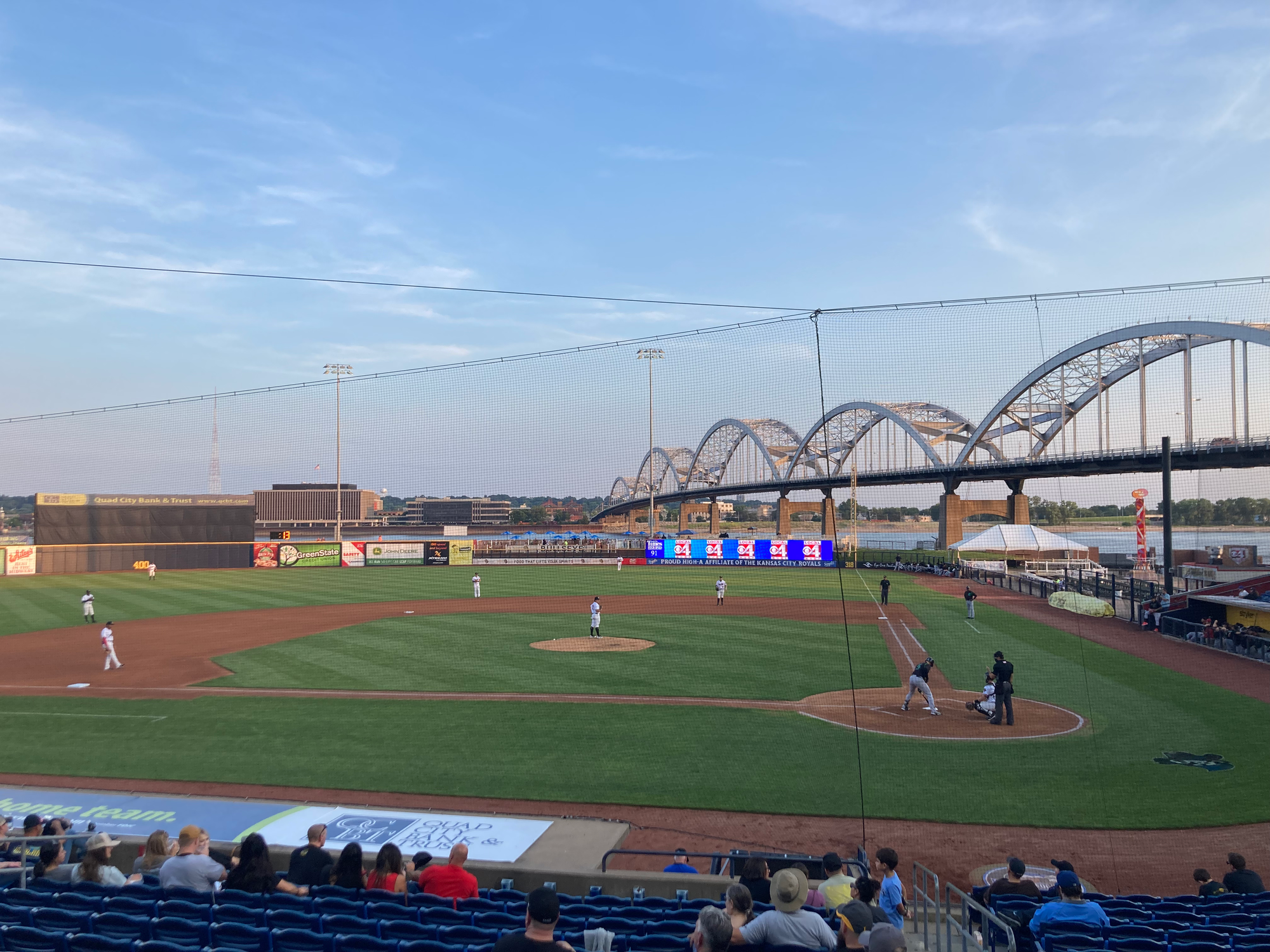
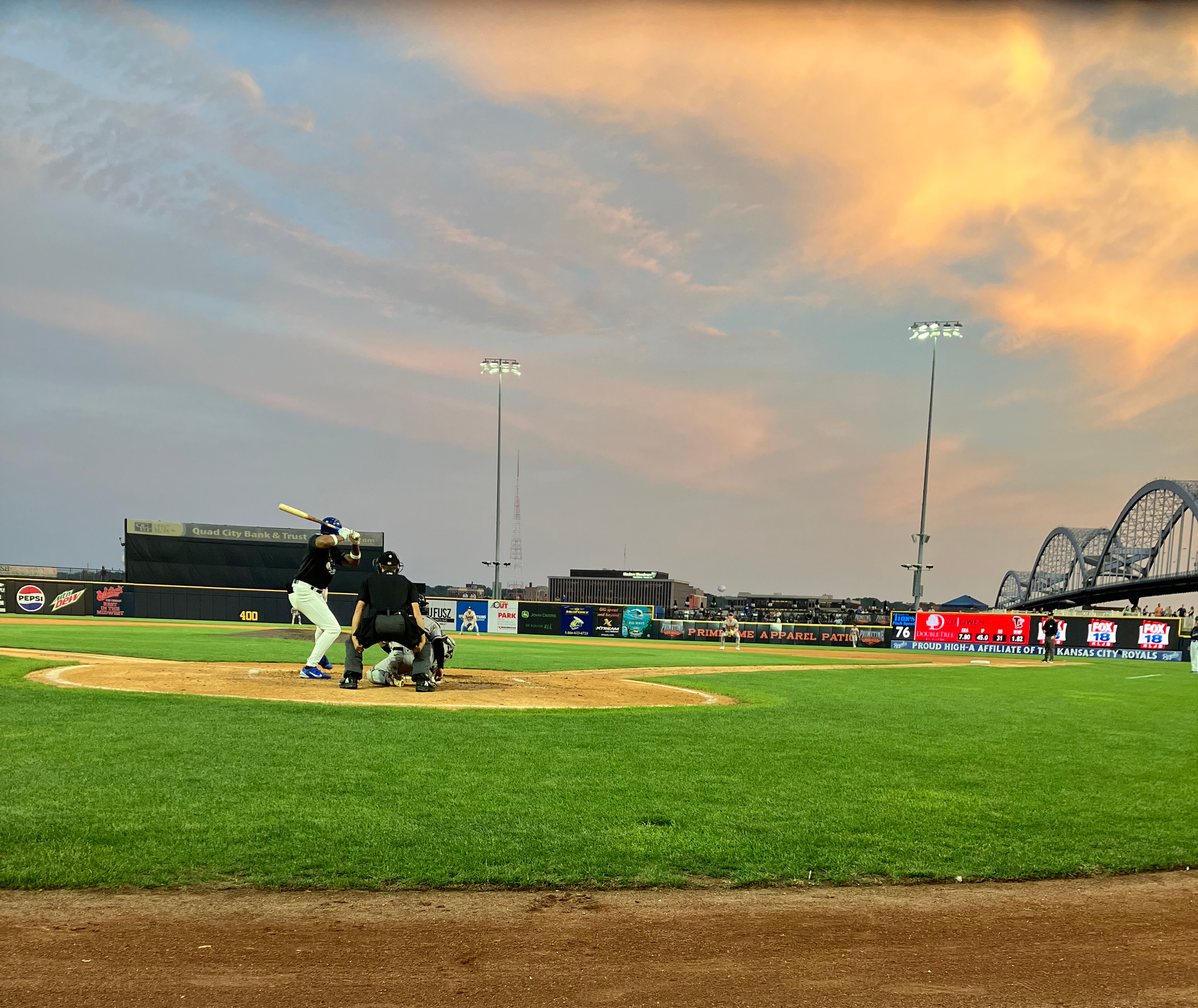
2022 and 2024 photos from the Centennial Bridge, from the Ferris wheel, from behind home plate, etc.
Production Files
Further Reading:
- A Brief History of the Davenport Levee Improvement Commission, 1952
- Davenport Public Library, "It’s Opening Day at Modern Woodmen Park Stadium, thanks to the Depression-era Dreams of the Davenport Levee Commission"
- Baseball at Davenport's John O'Donnell Stadium by Tim Rask
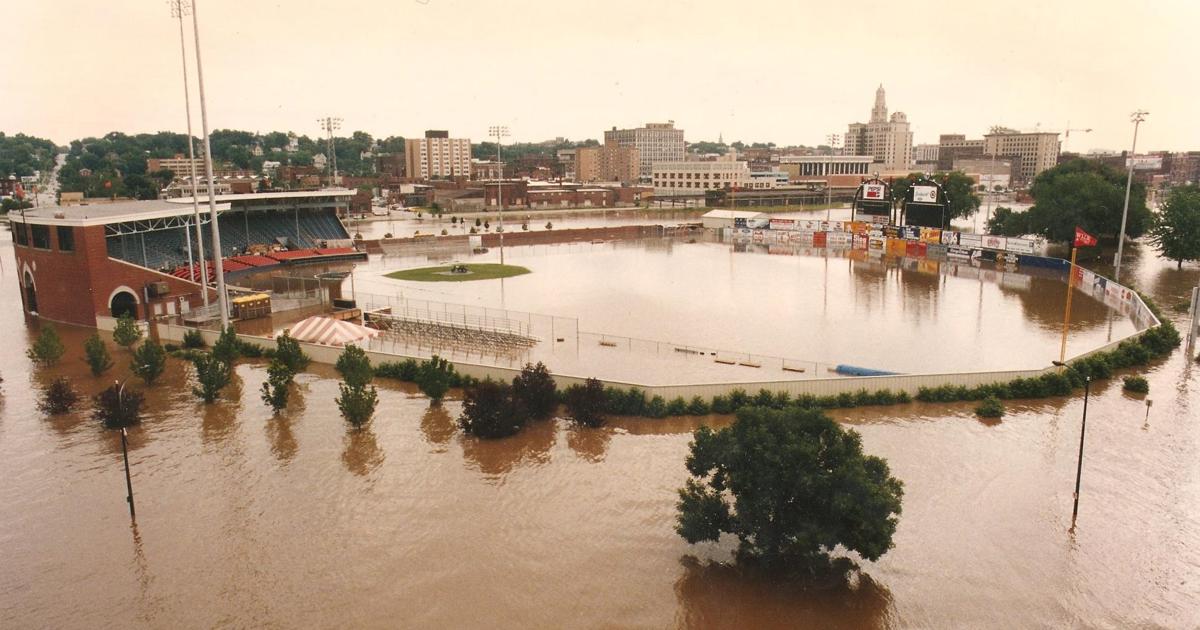
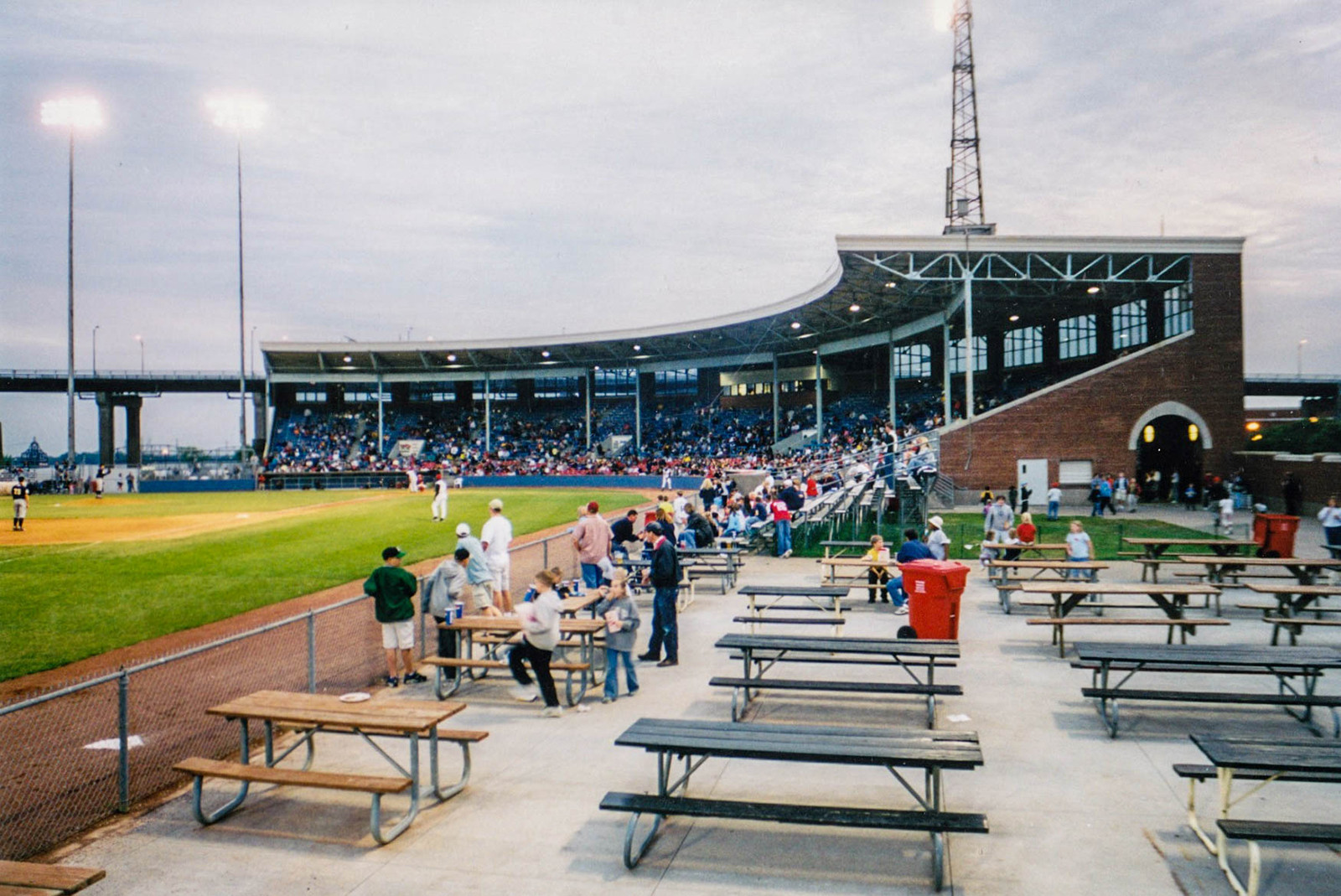
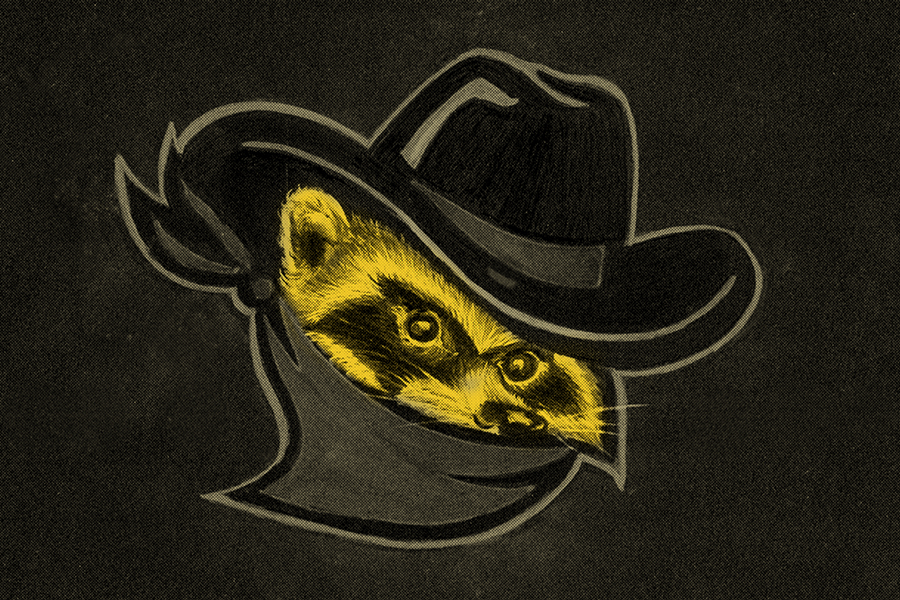
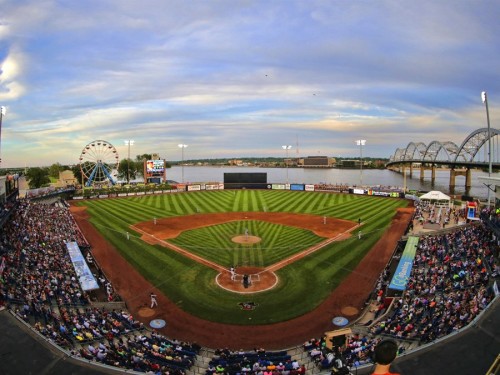
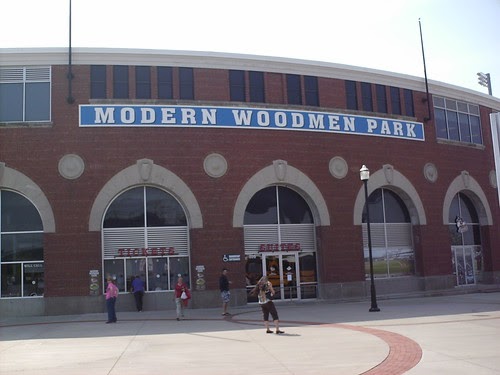
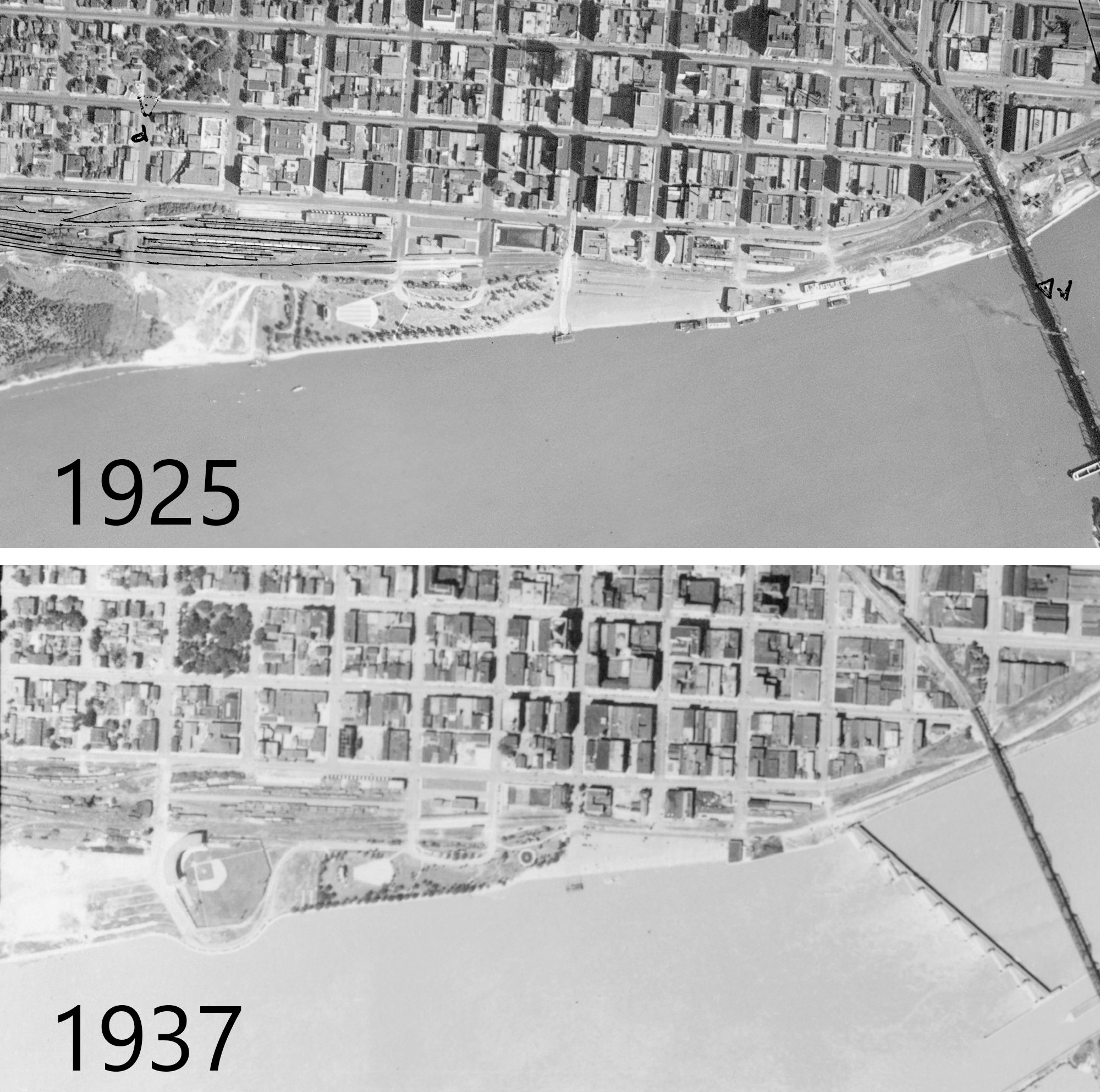
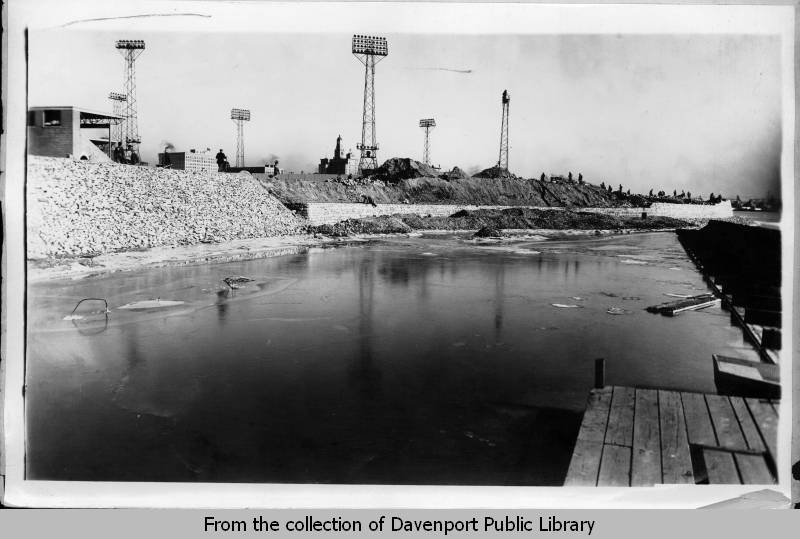
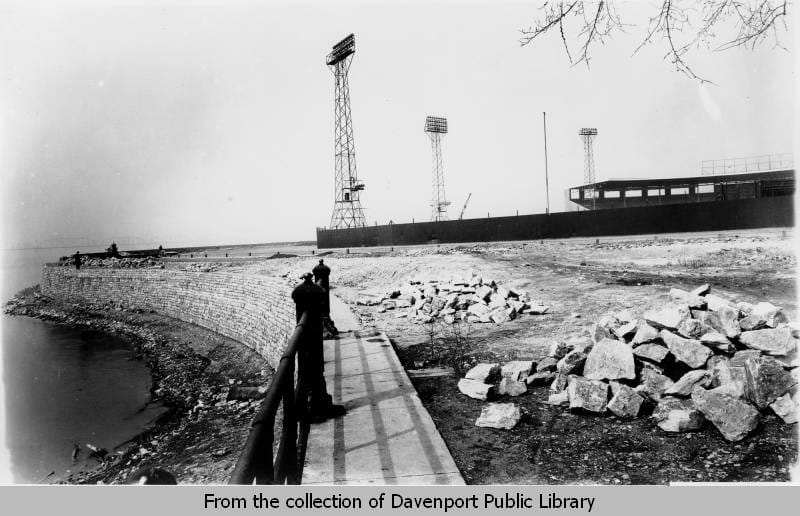
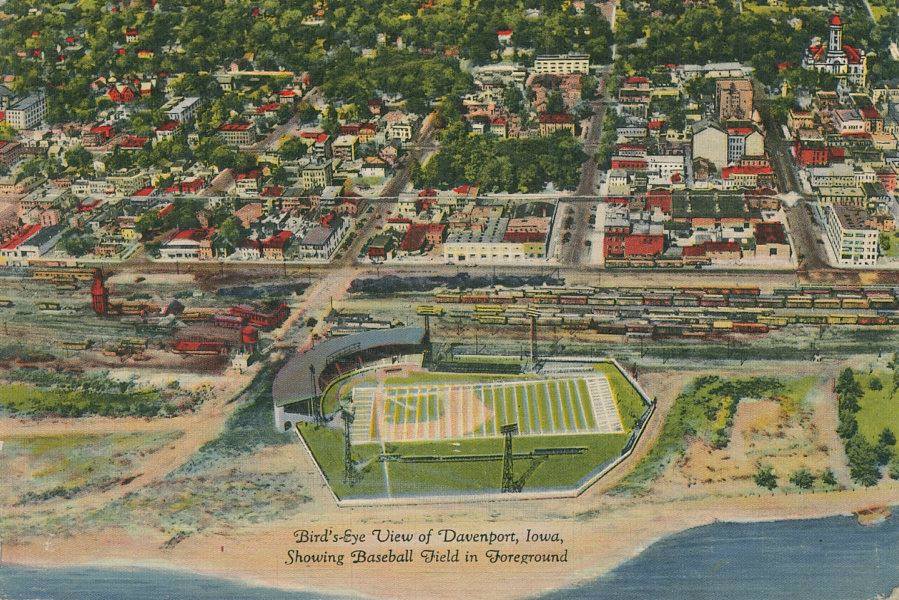
1934 photos from rebuilding the levee, HE Dissette, Richardson Sloan Special Collections, Davenport Public Library, UMVDIA | aerial postcard
And this is where I took the photo from.
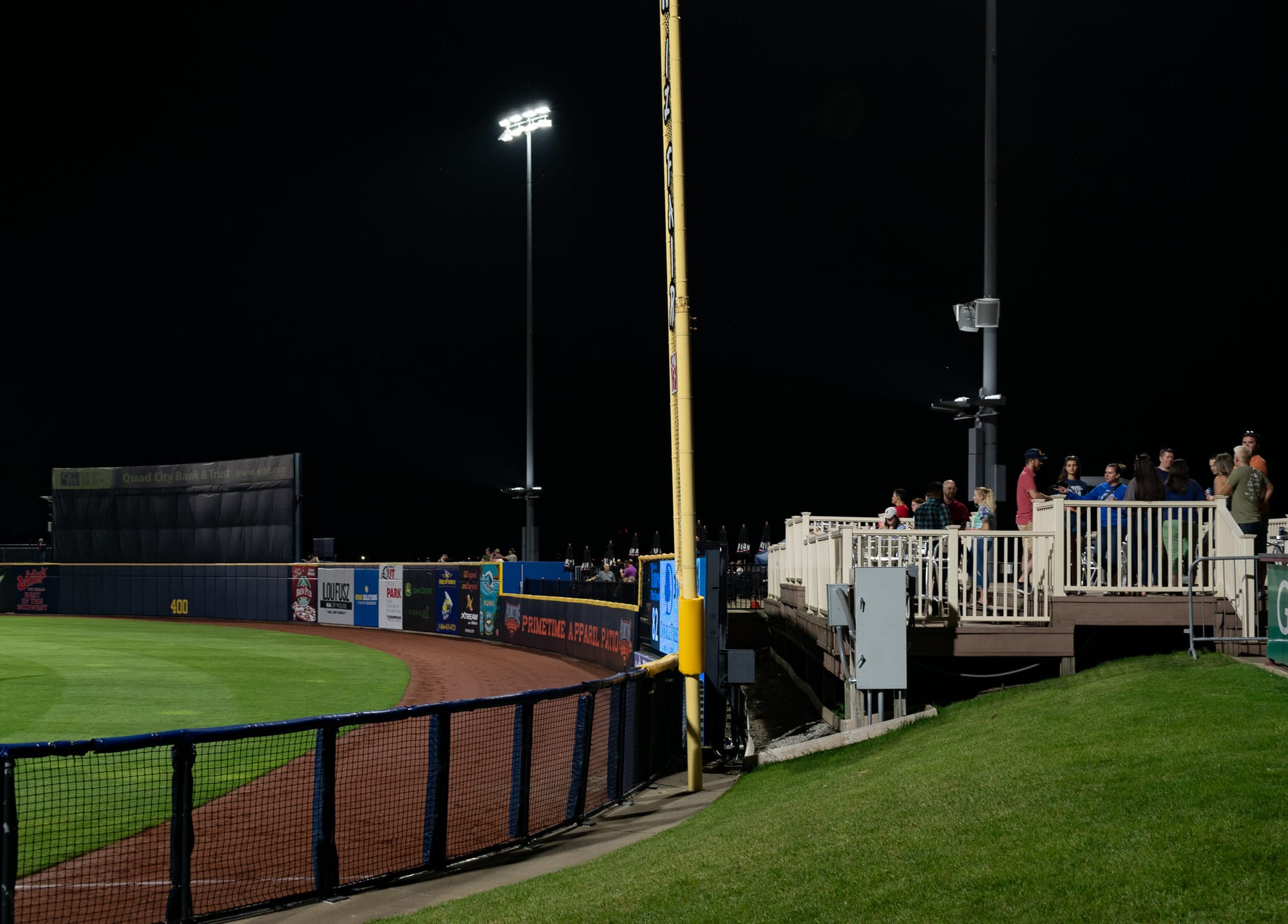
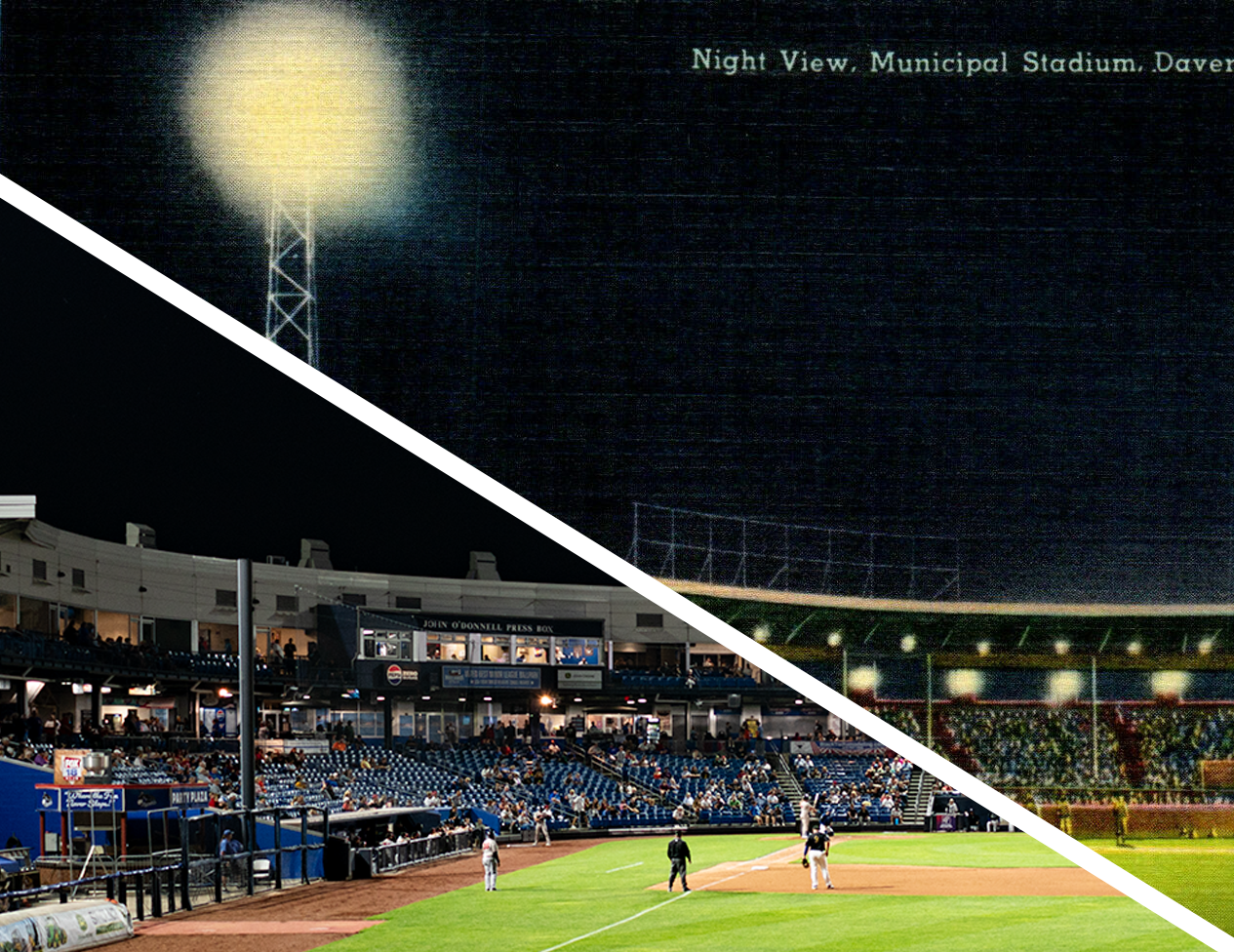





Member discussion: